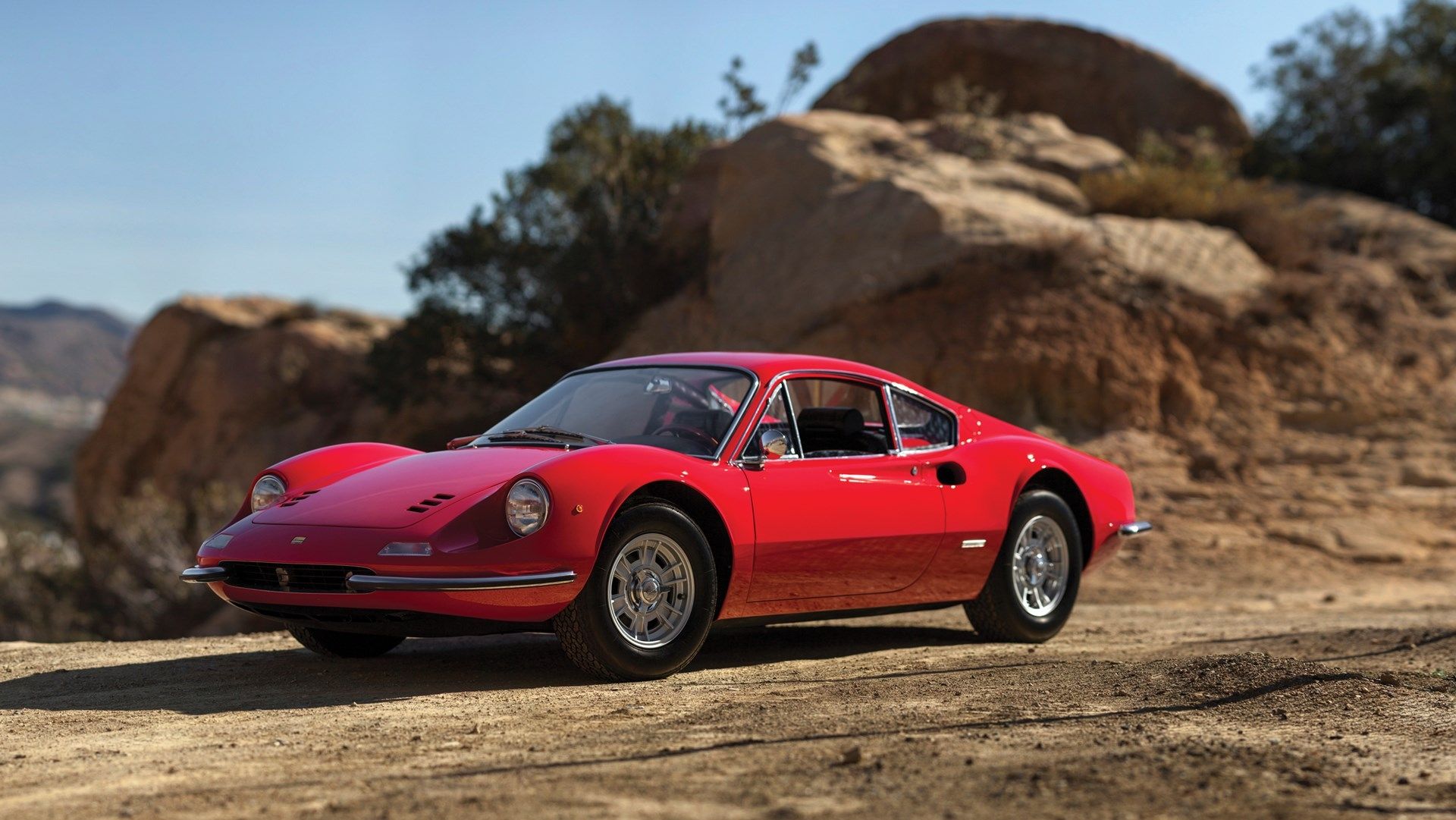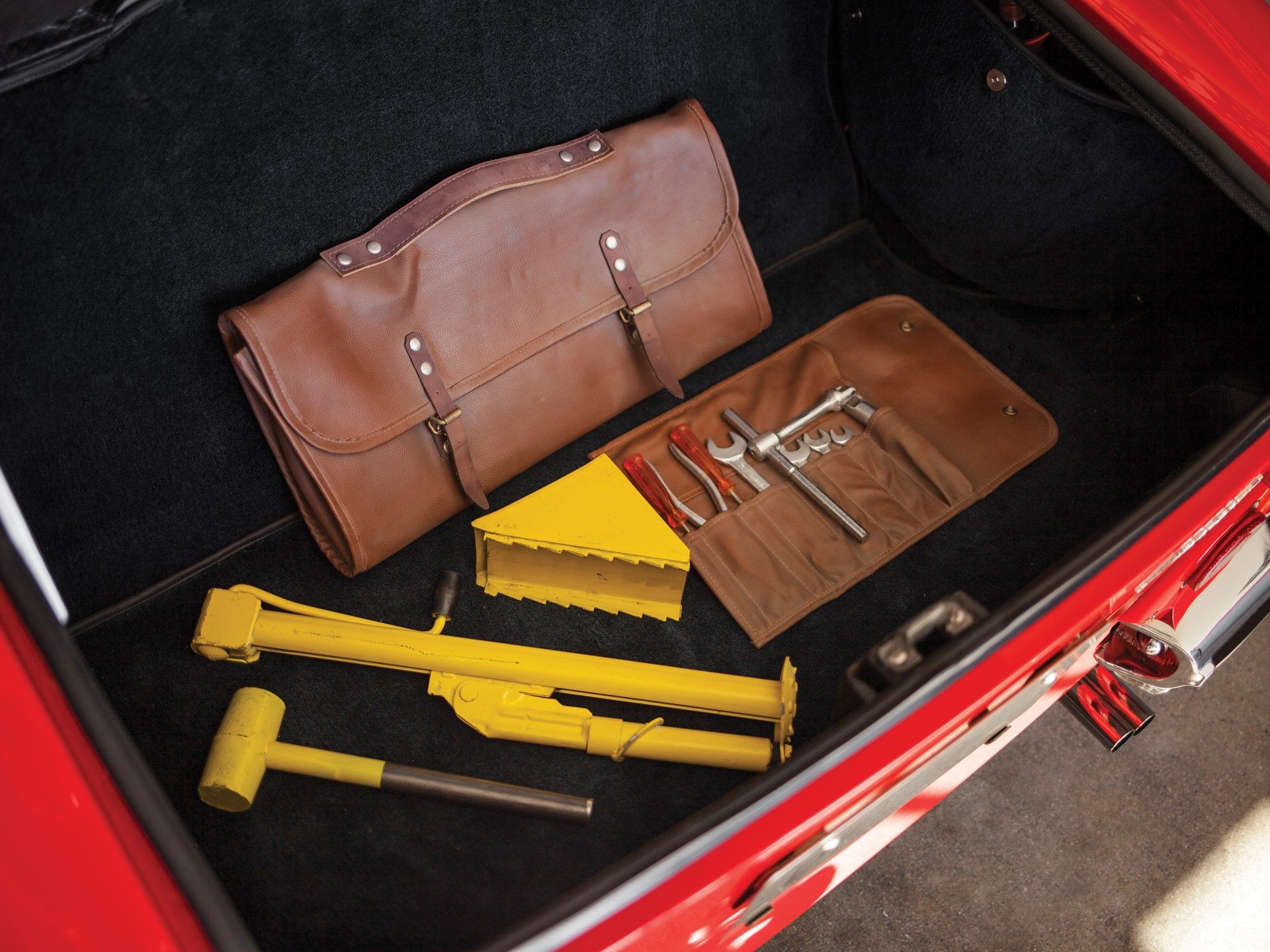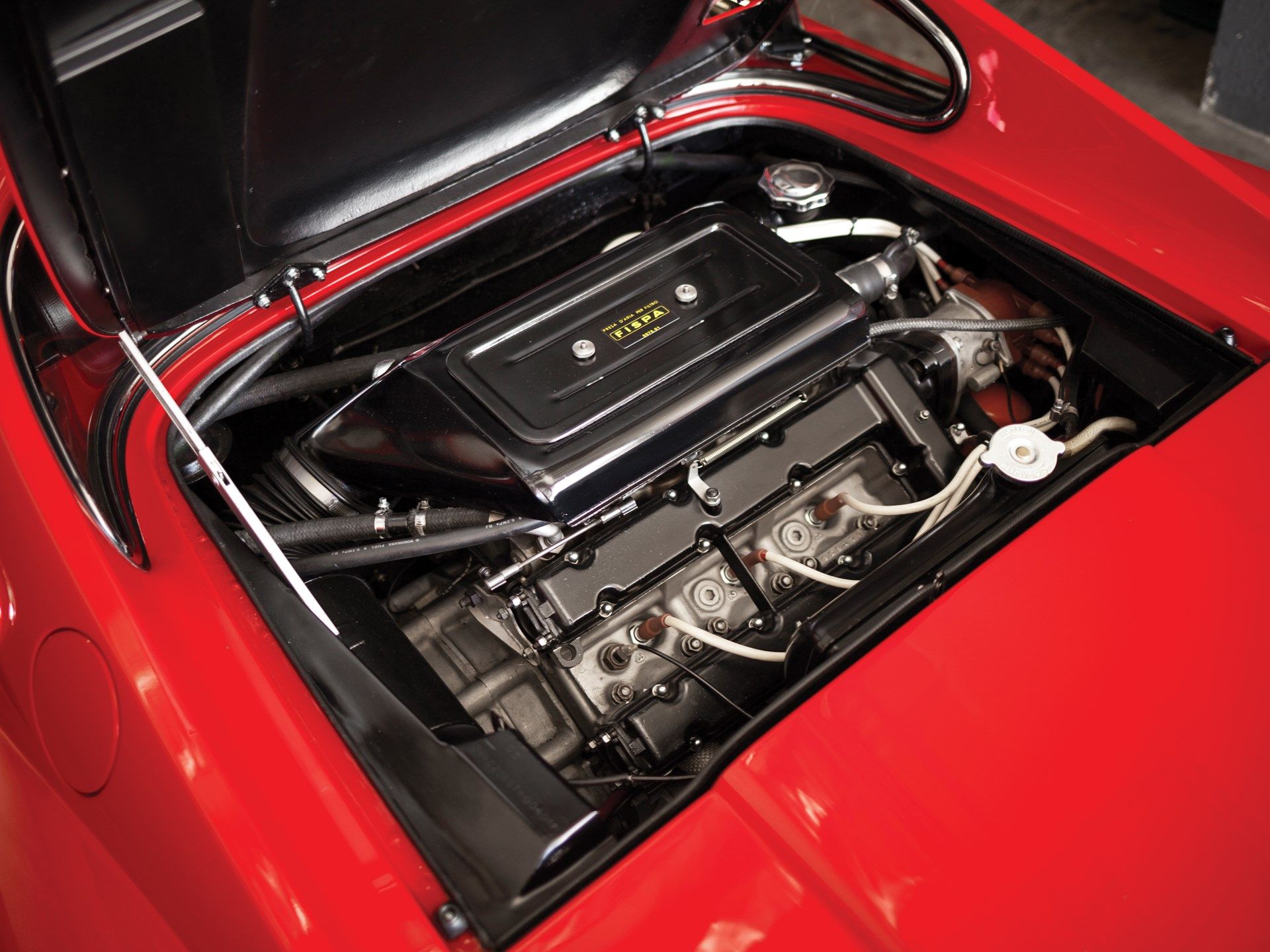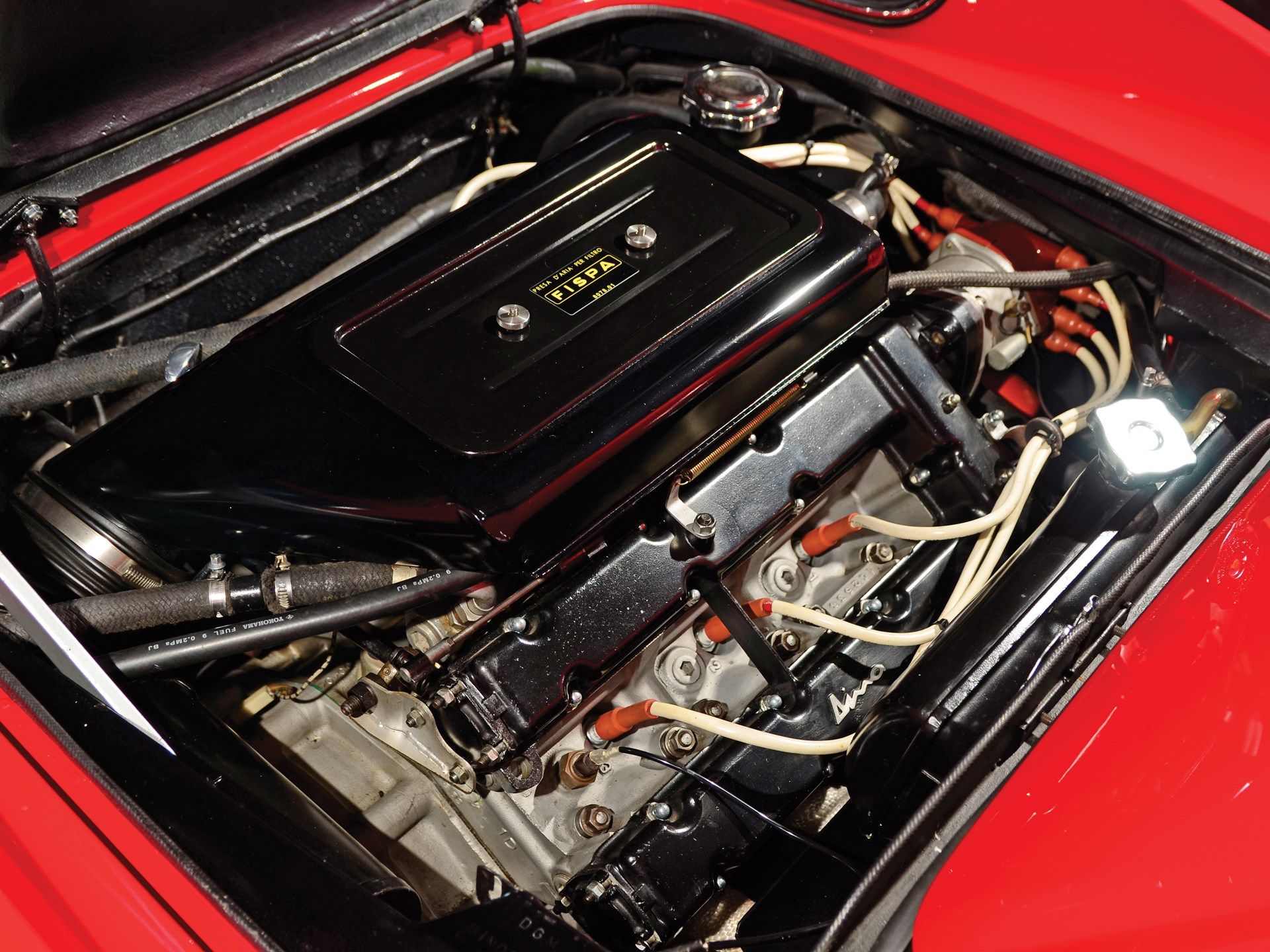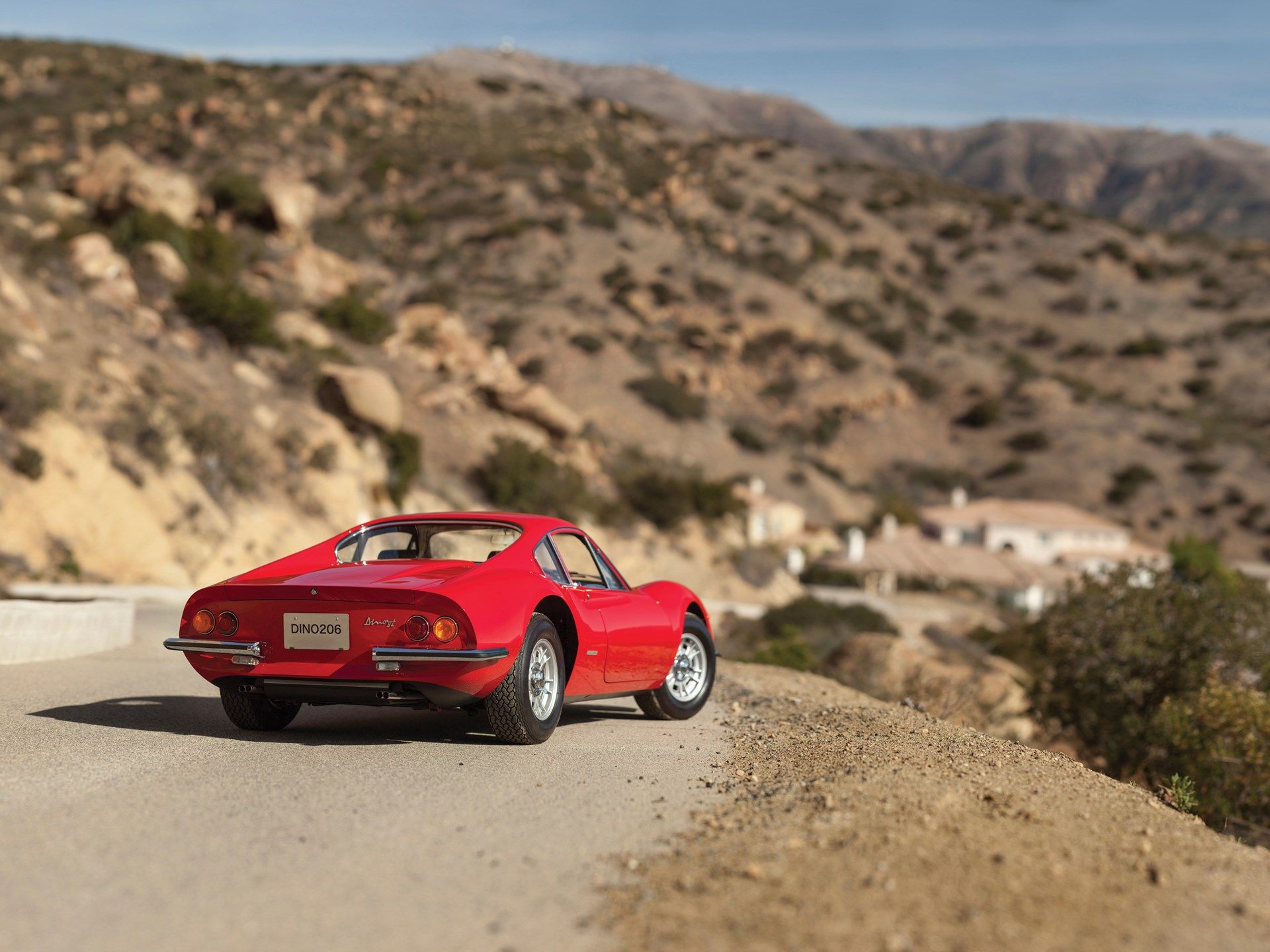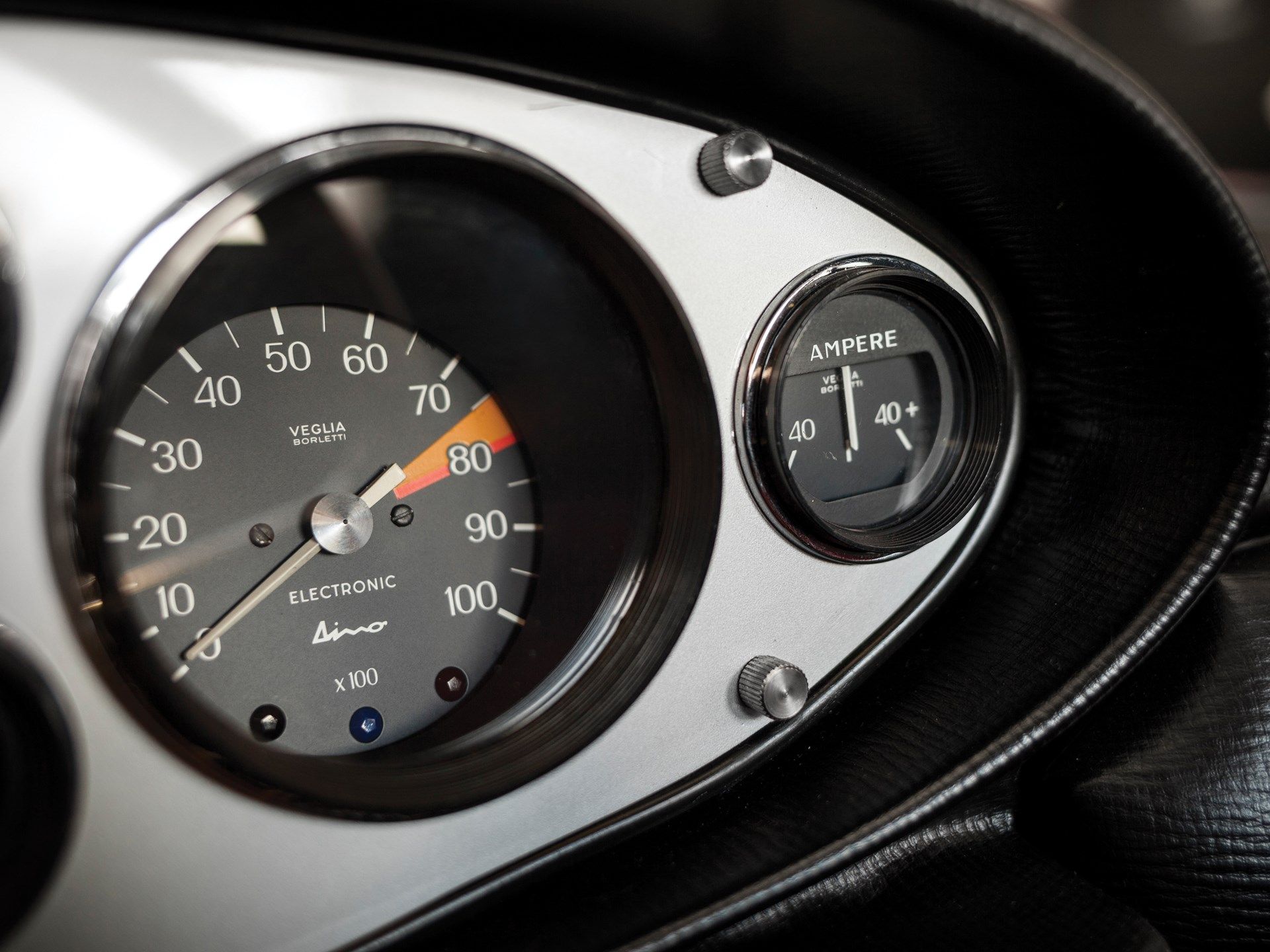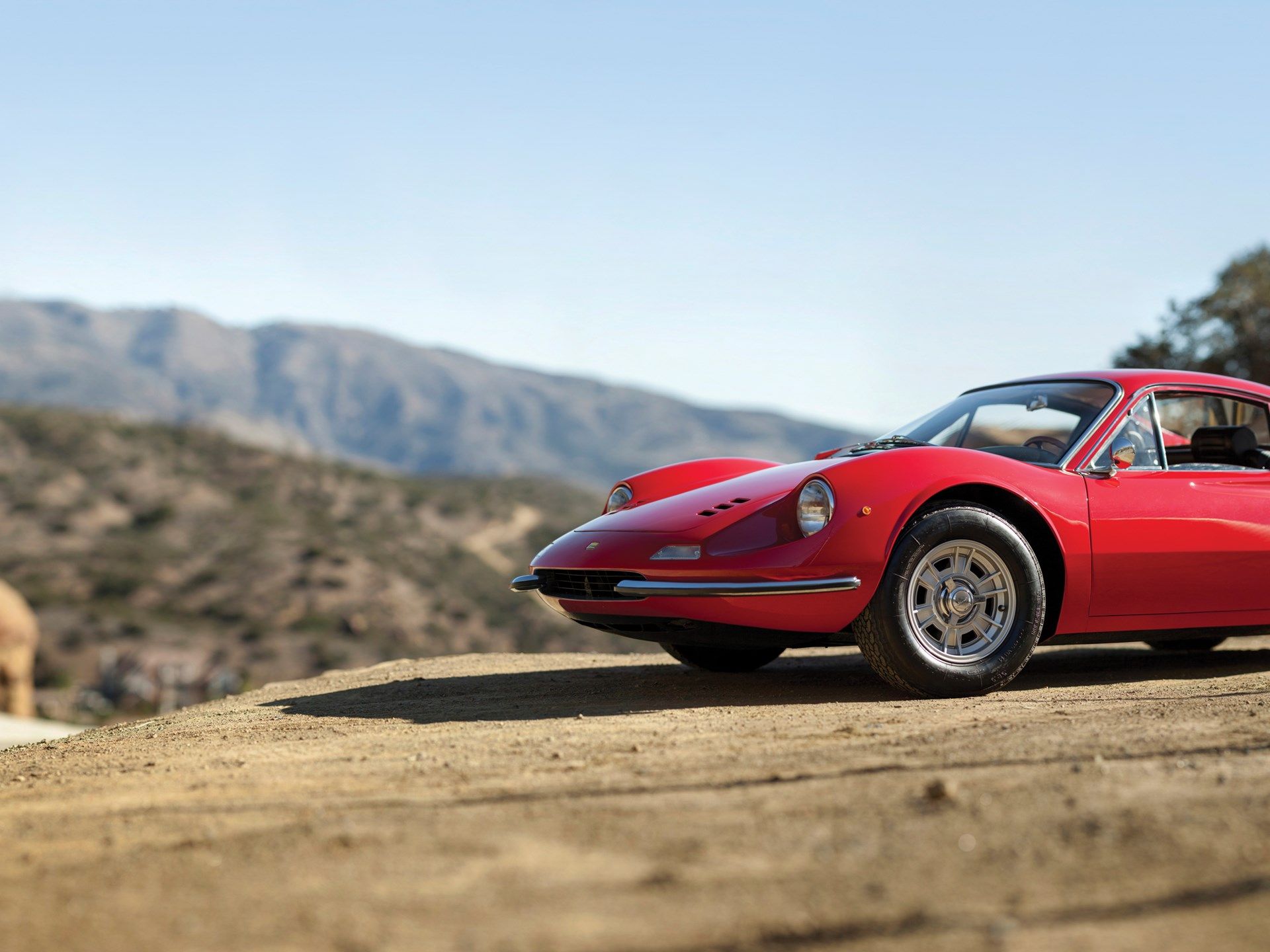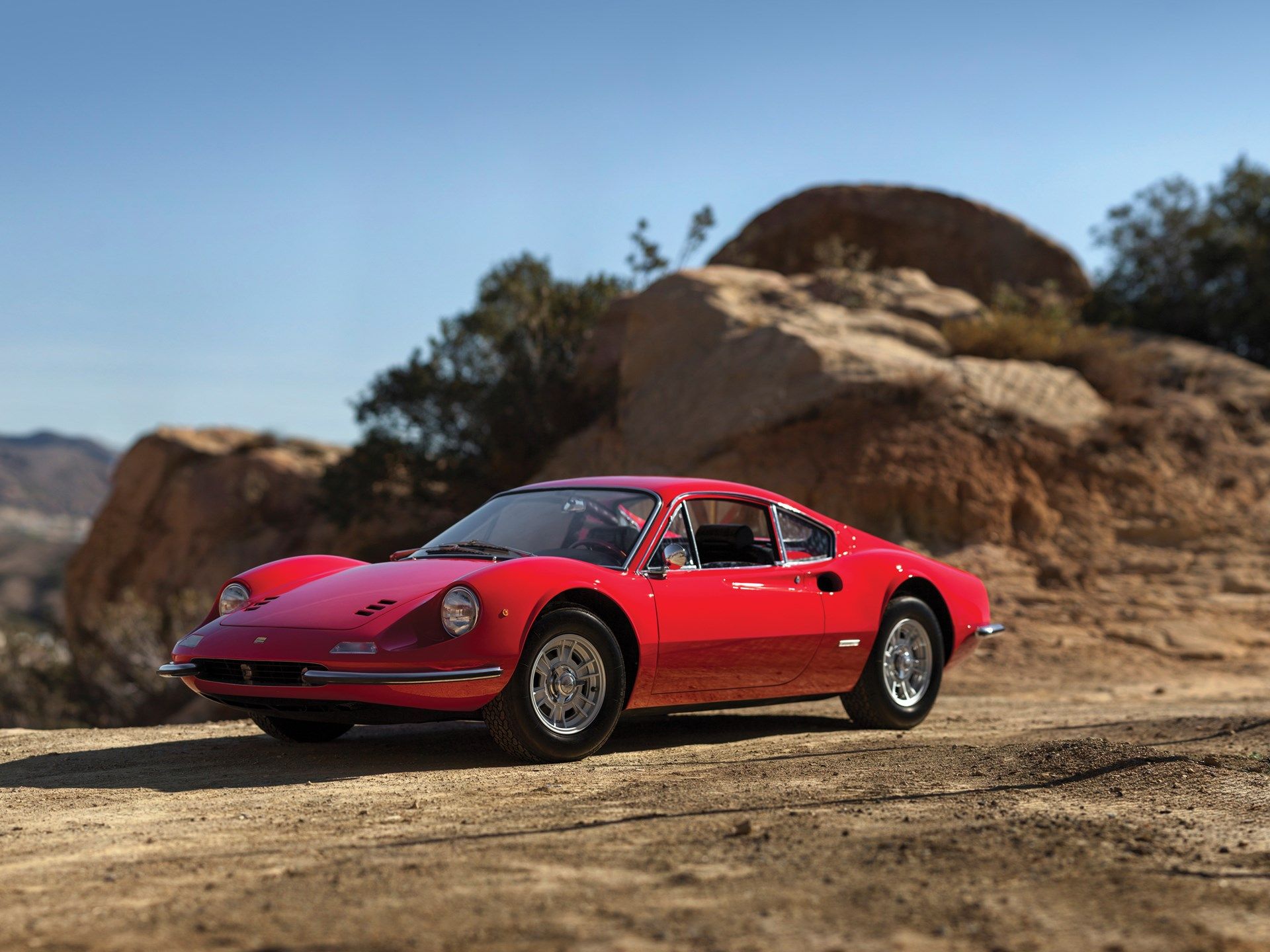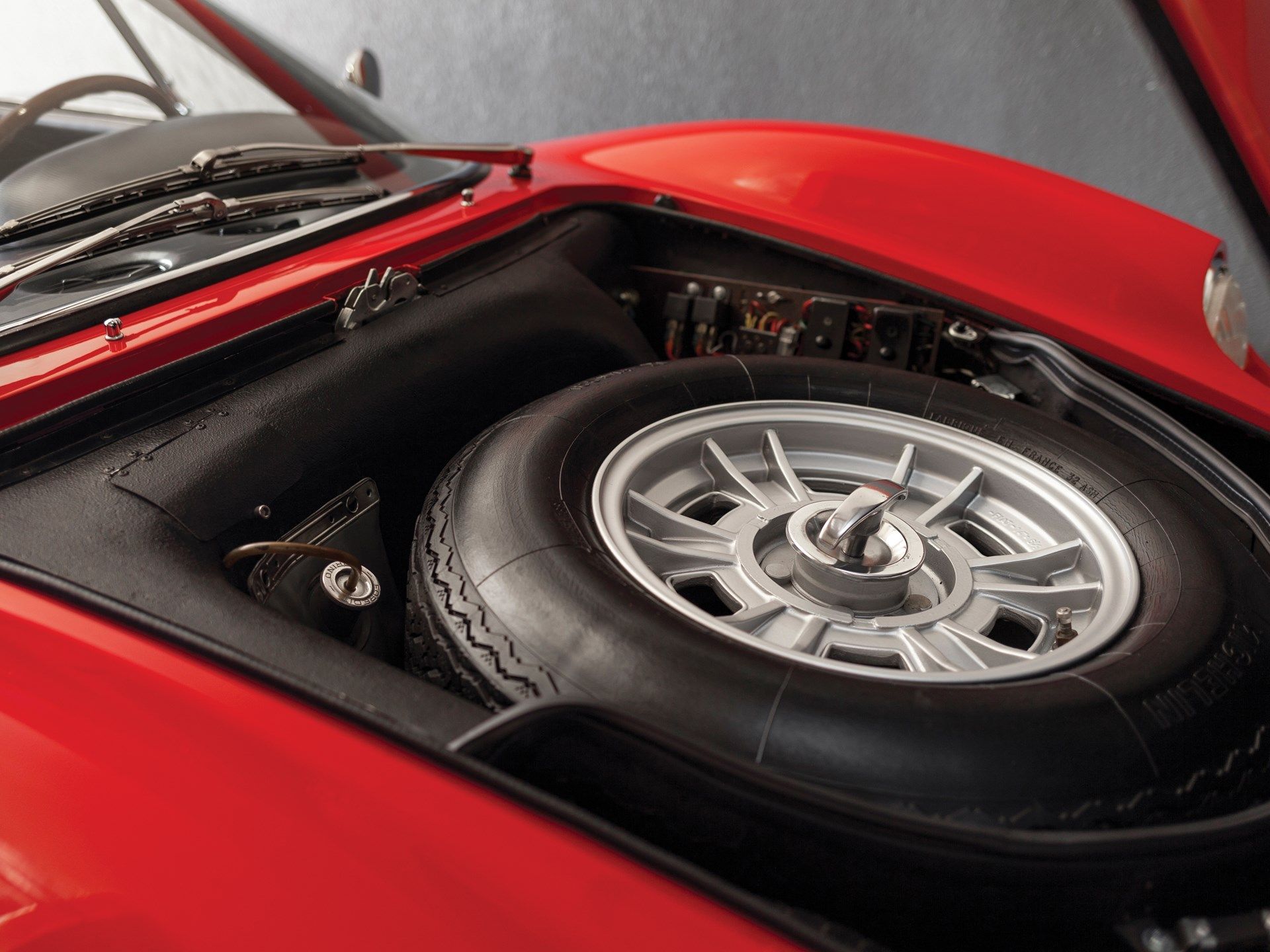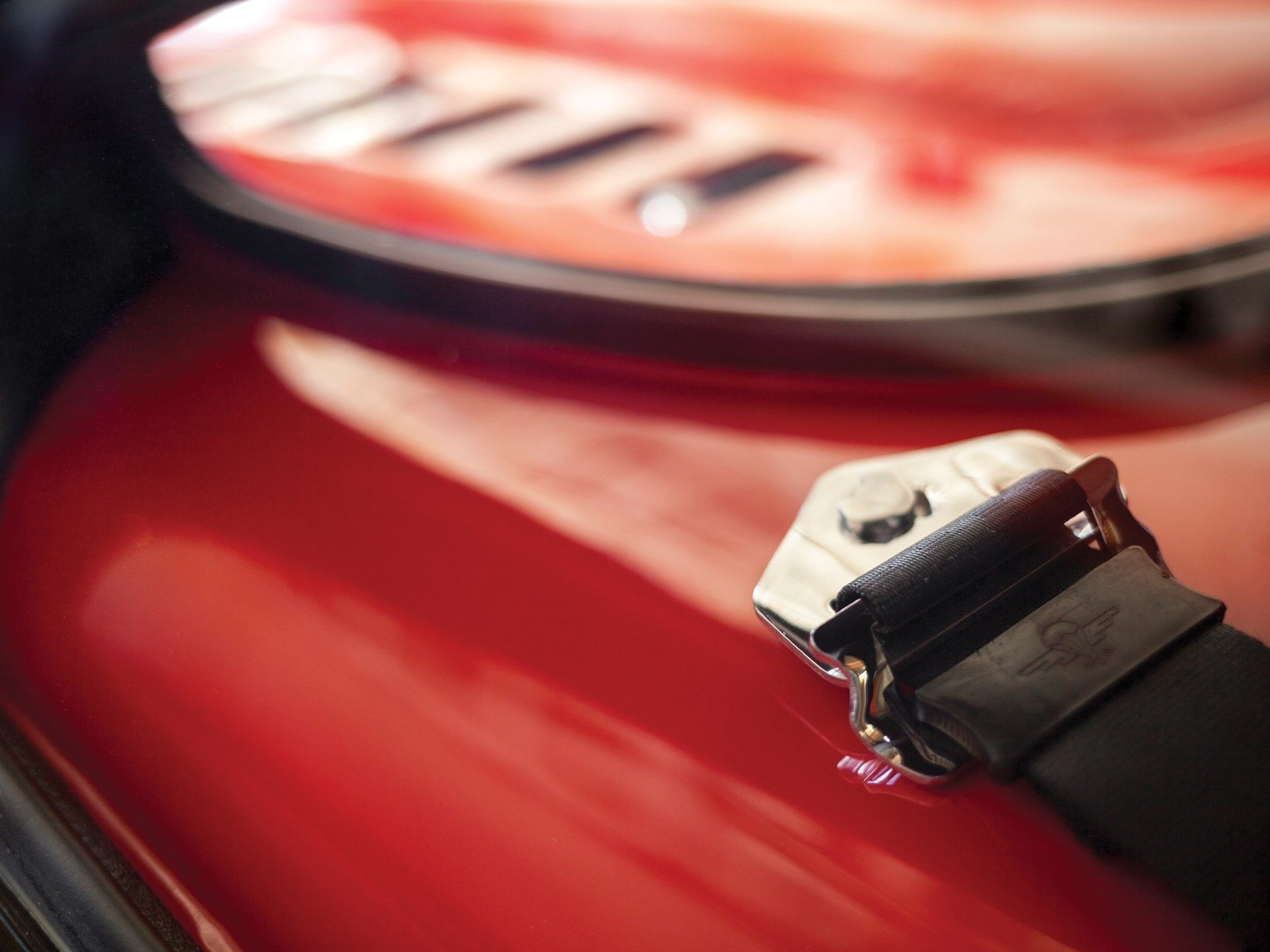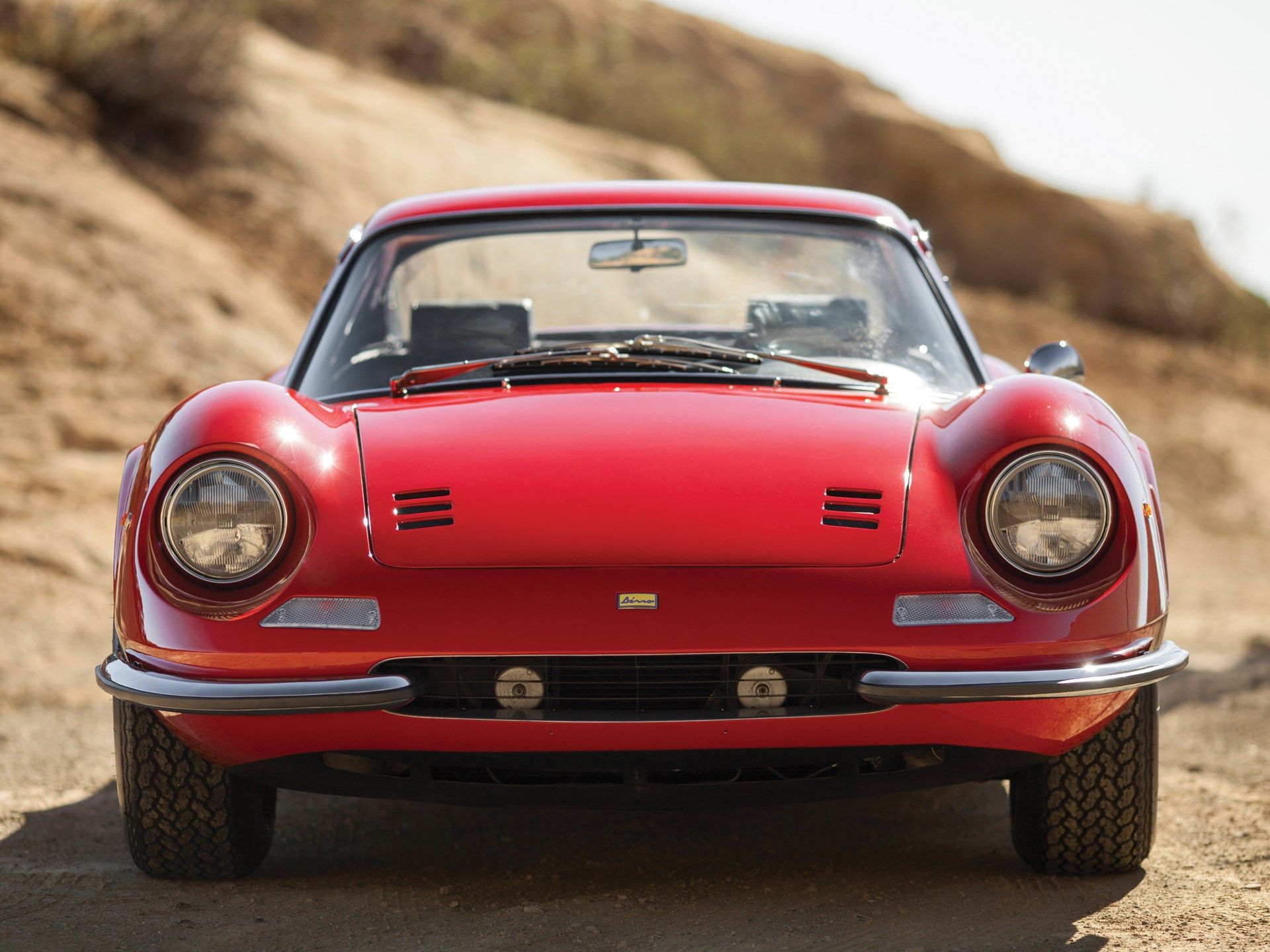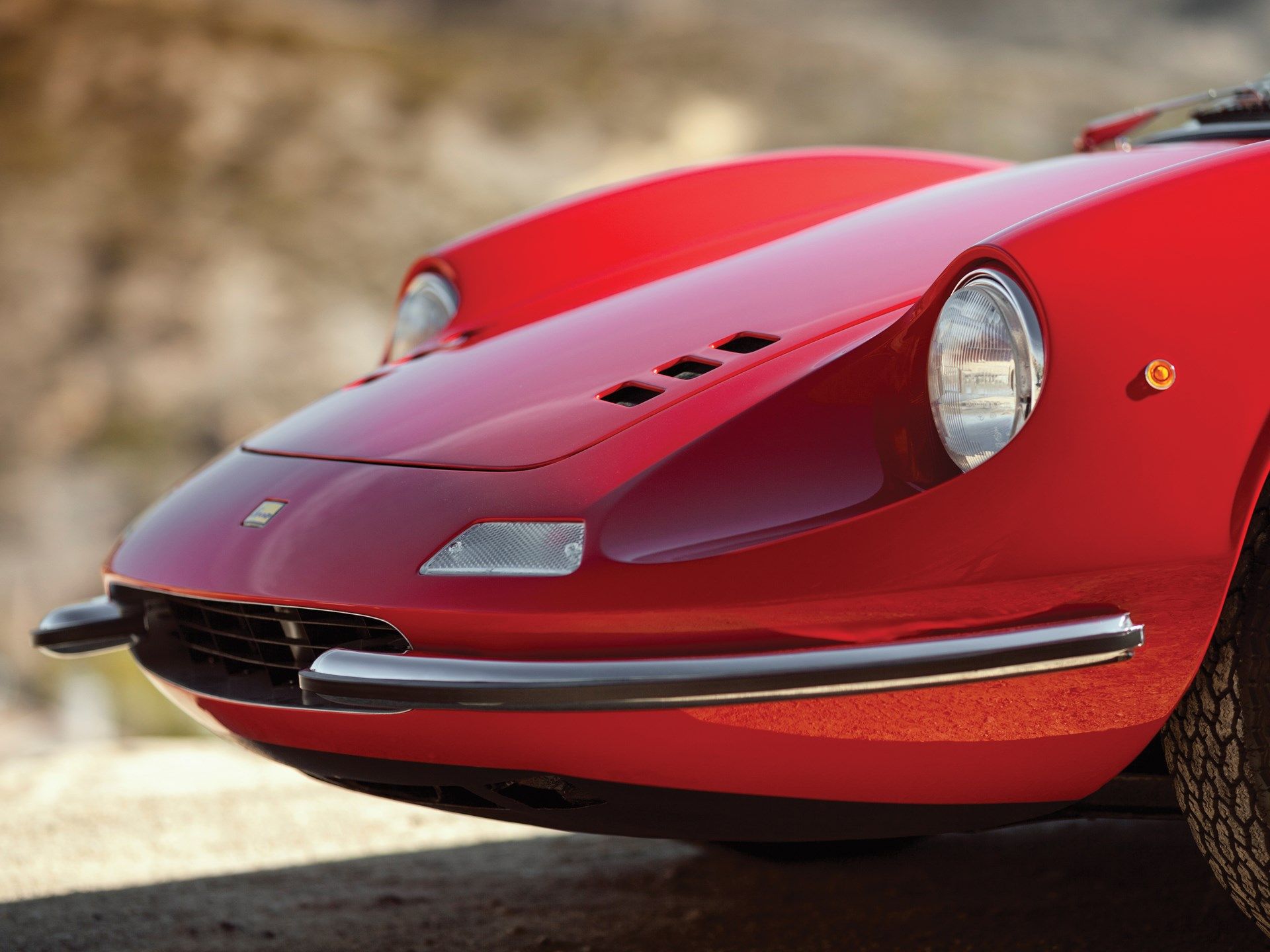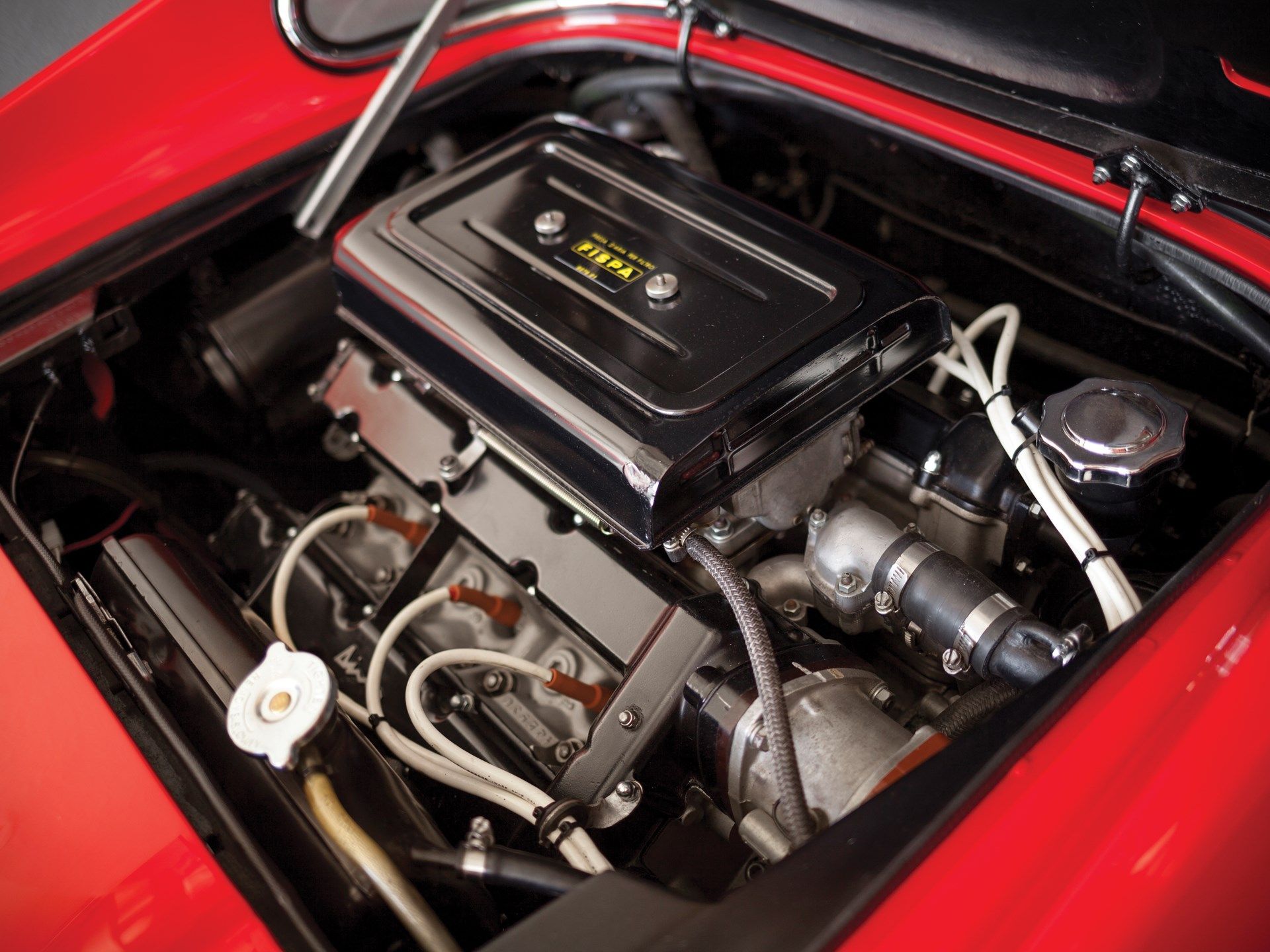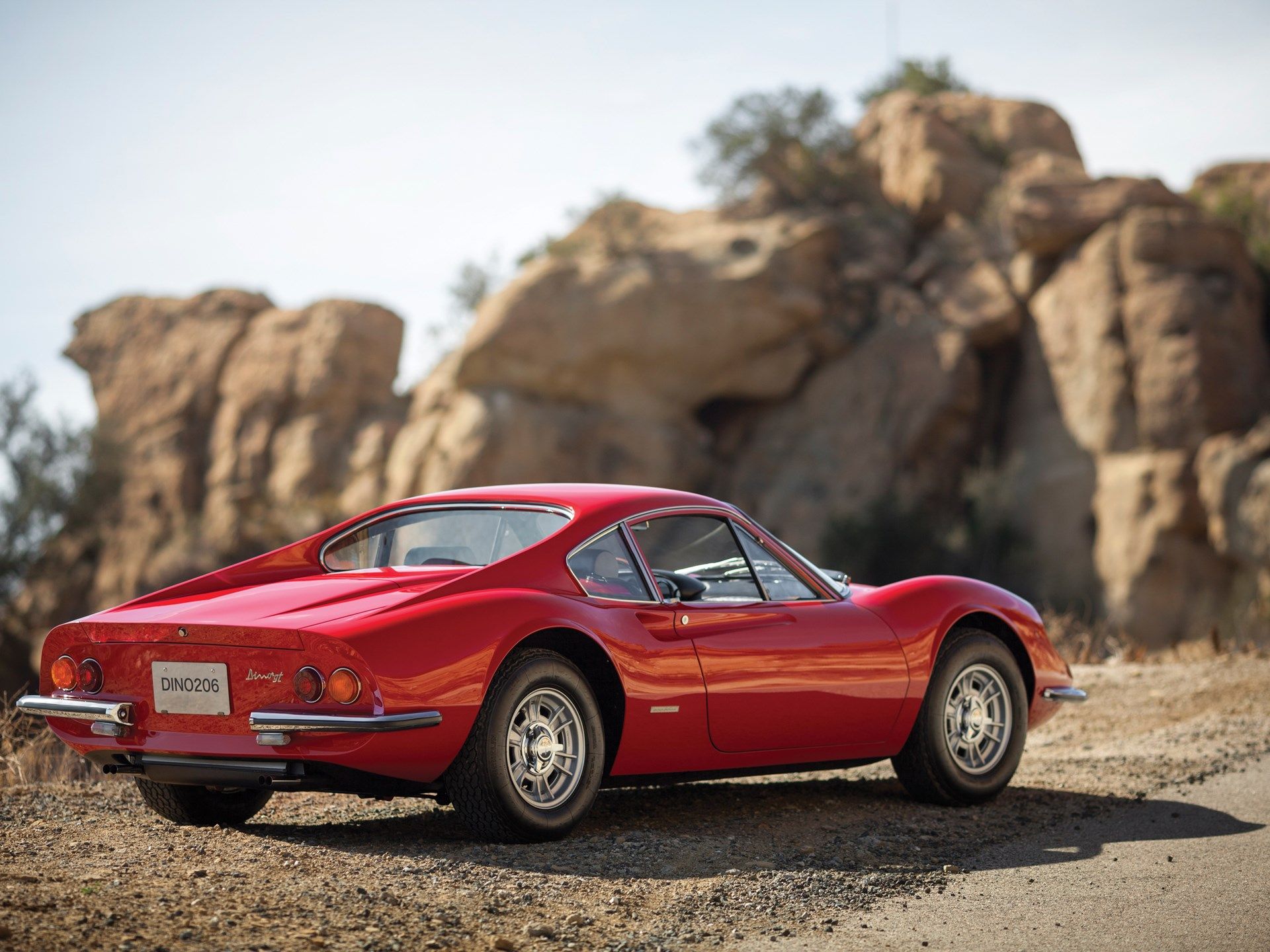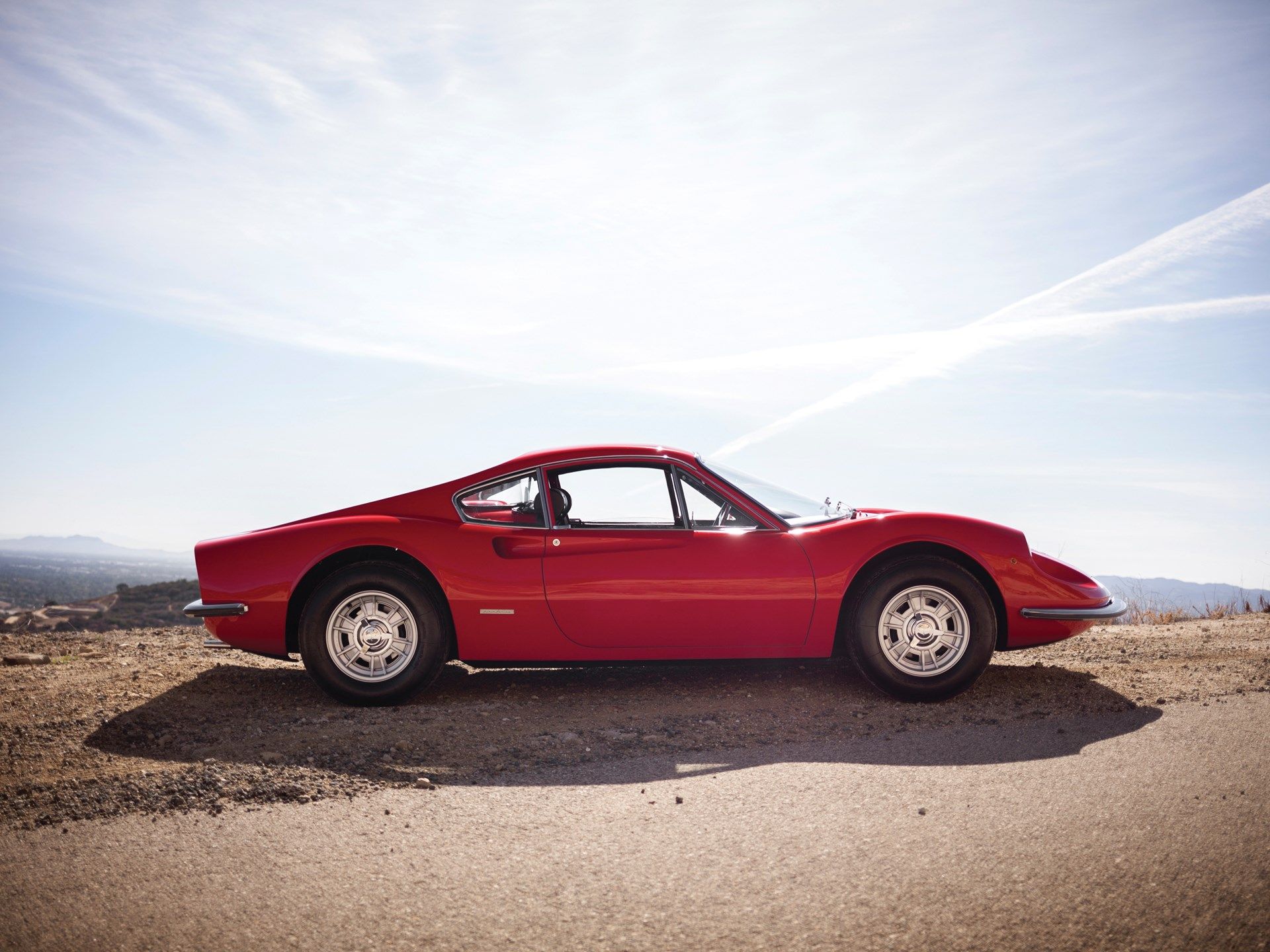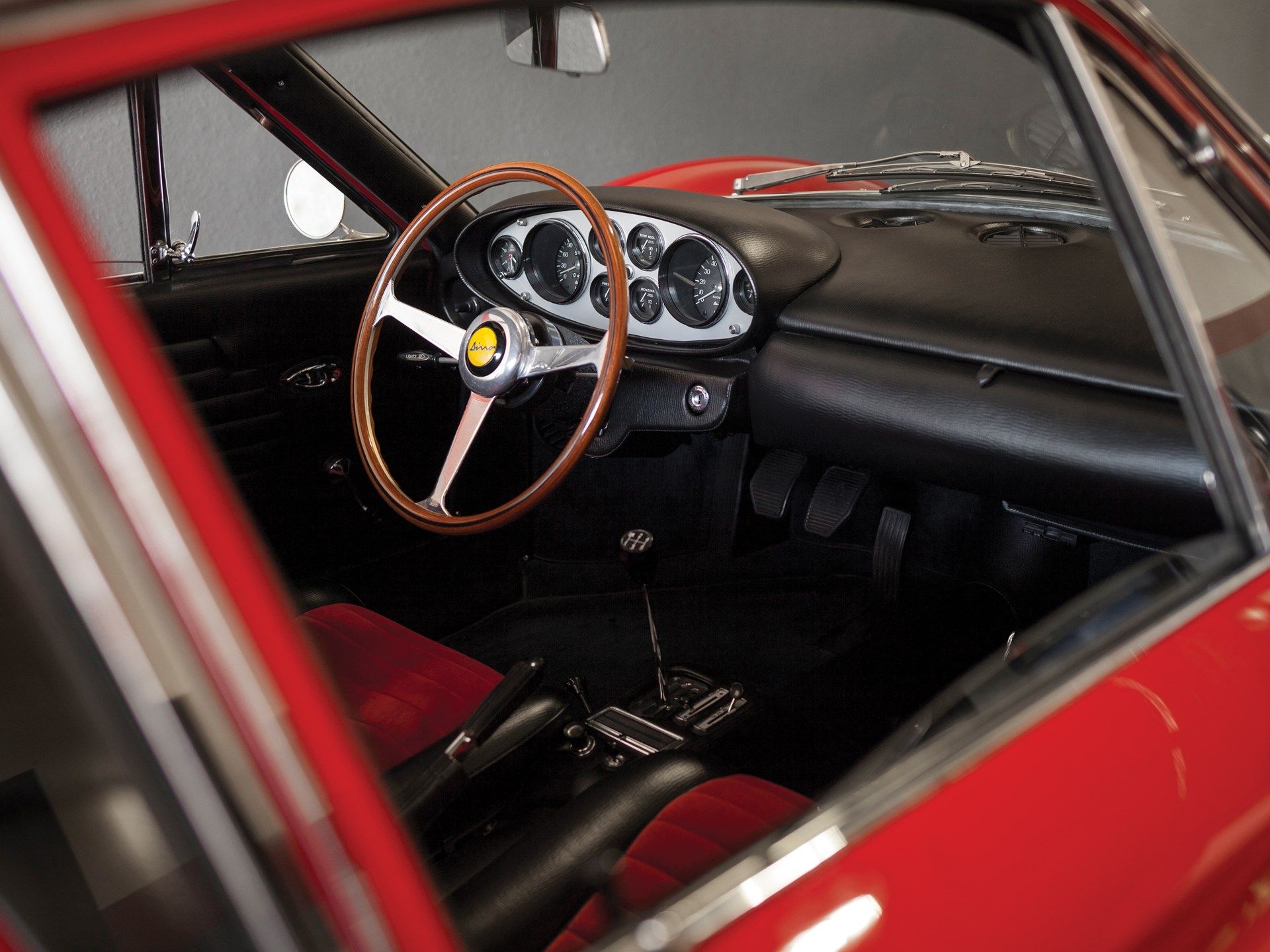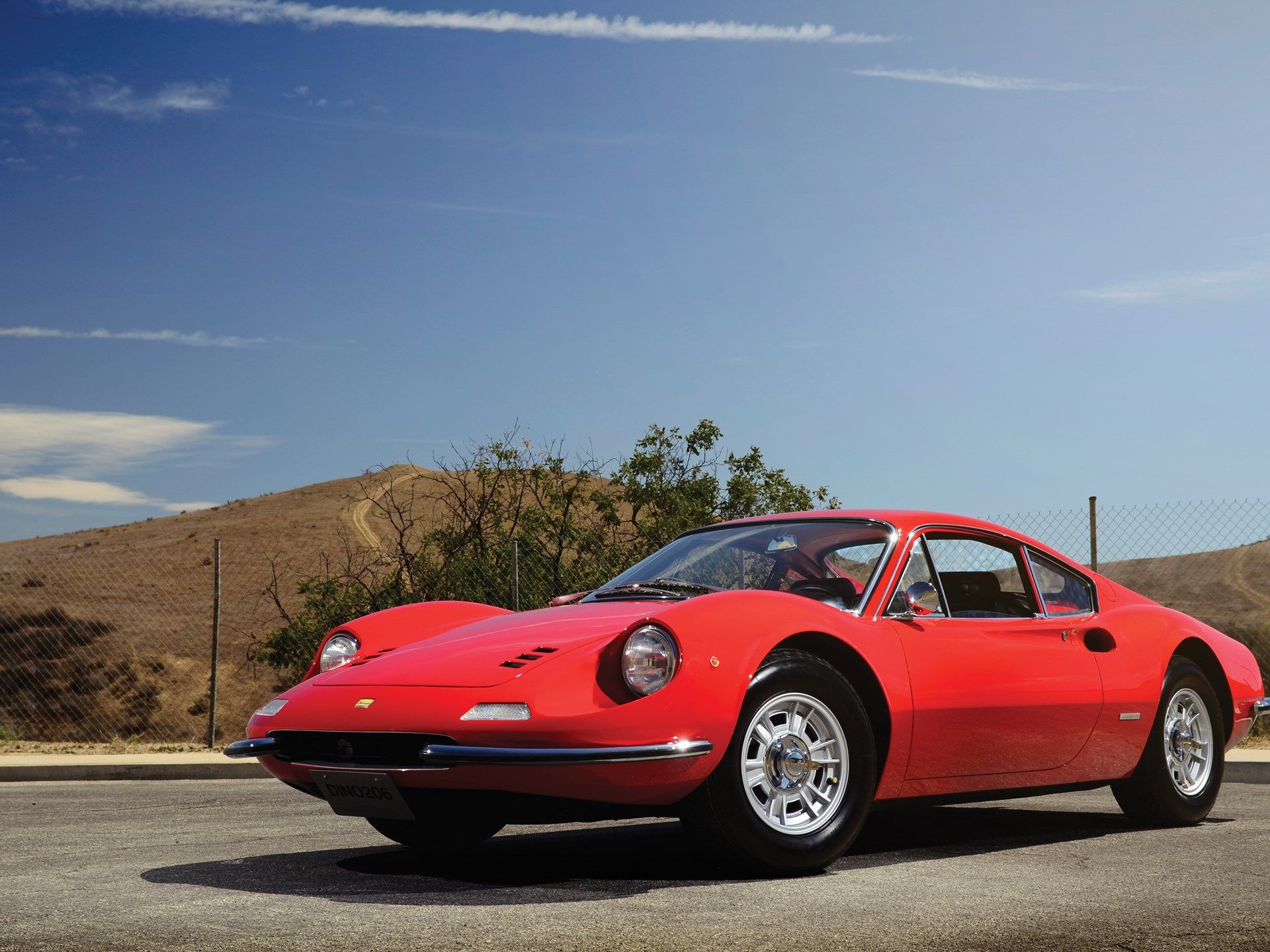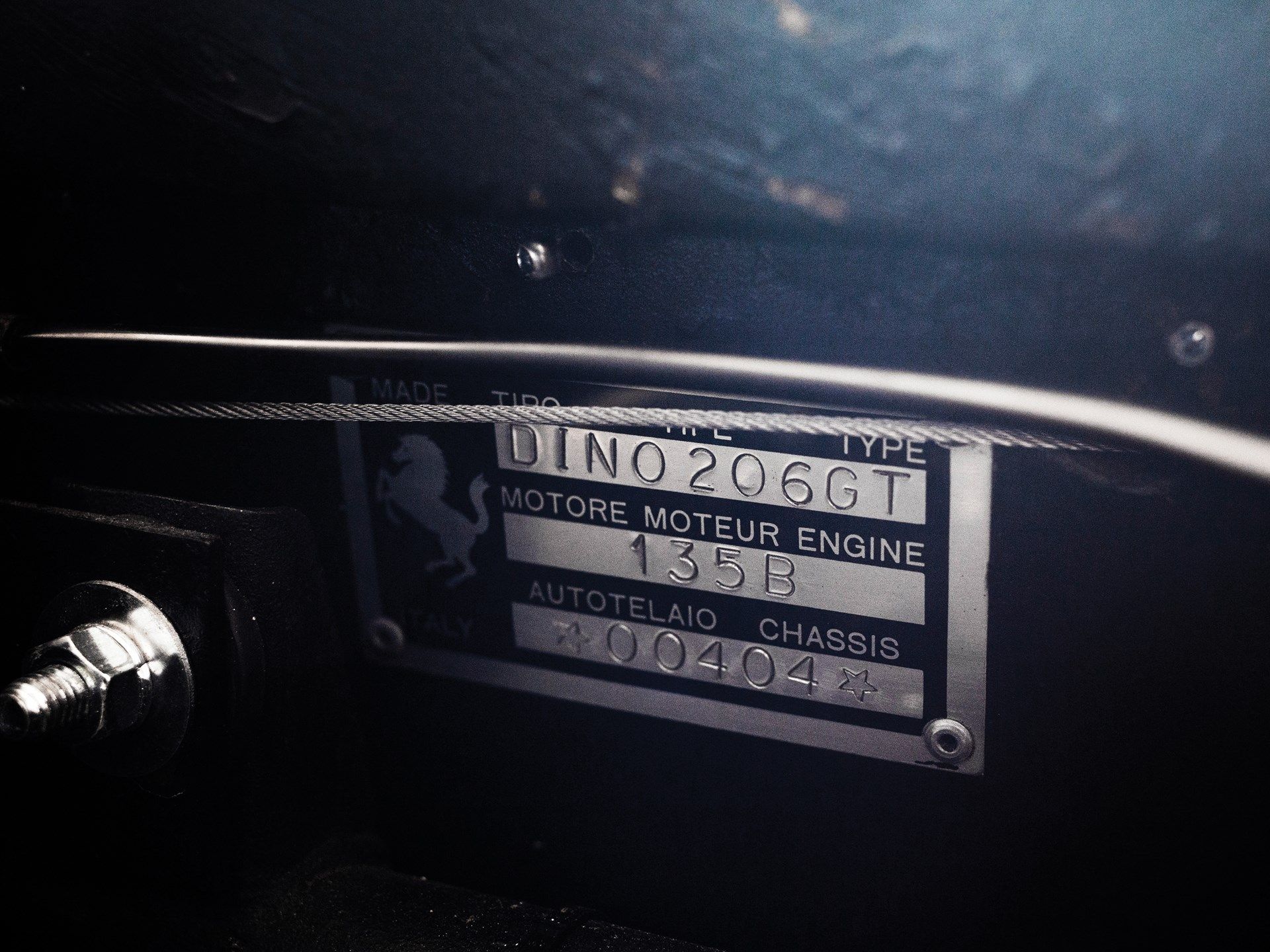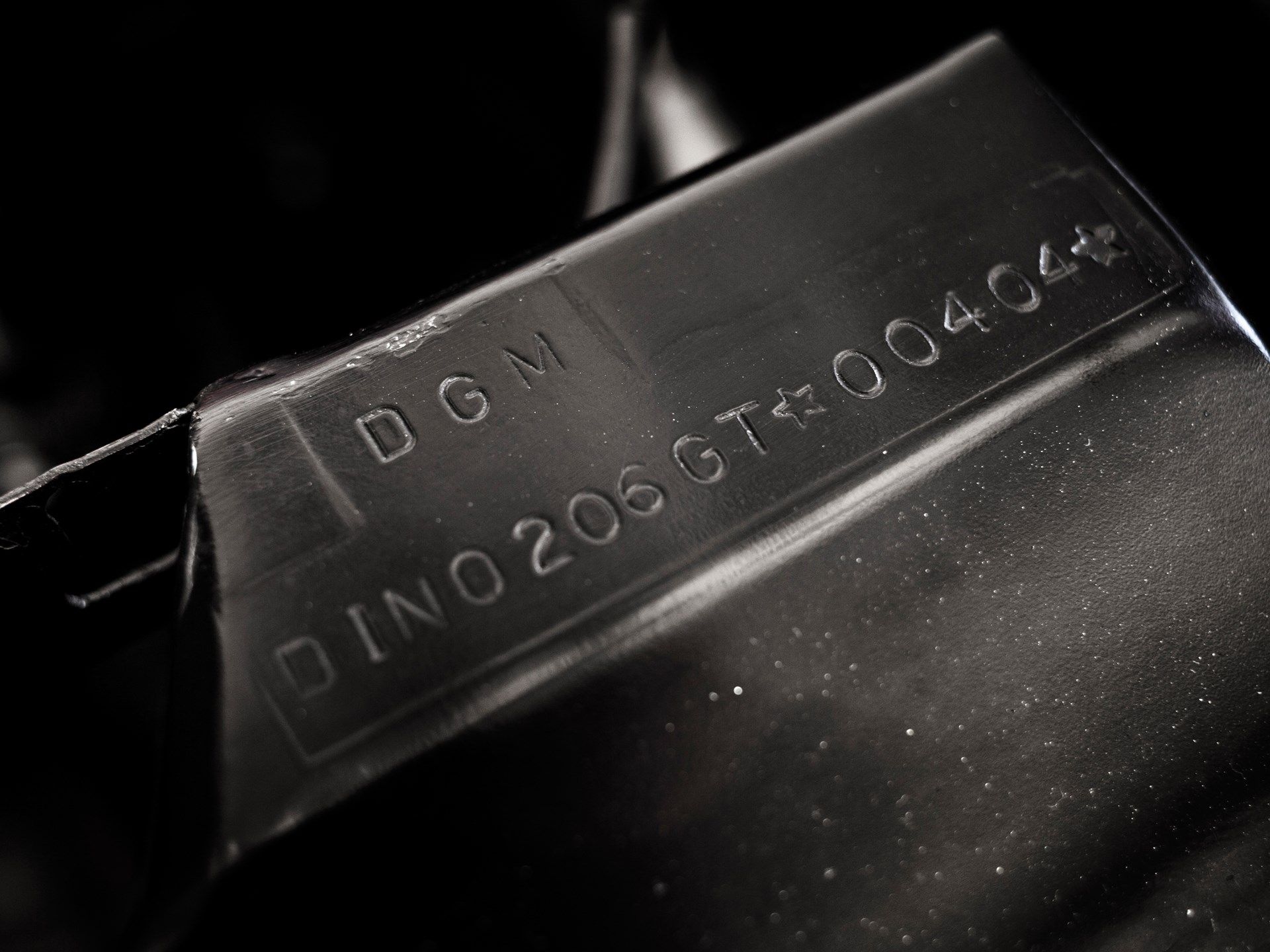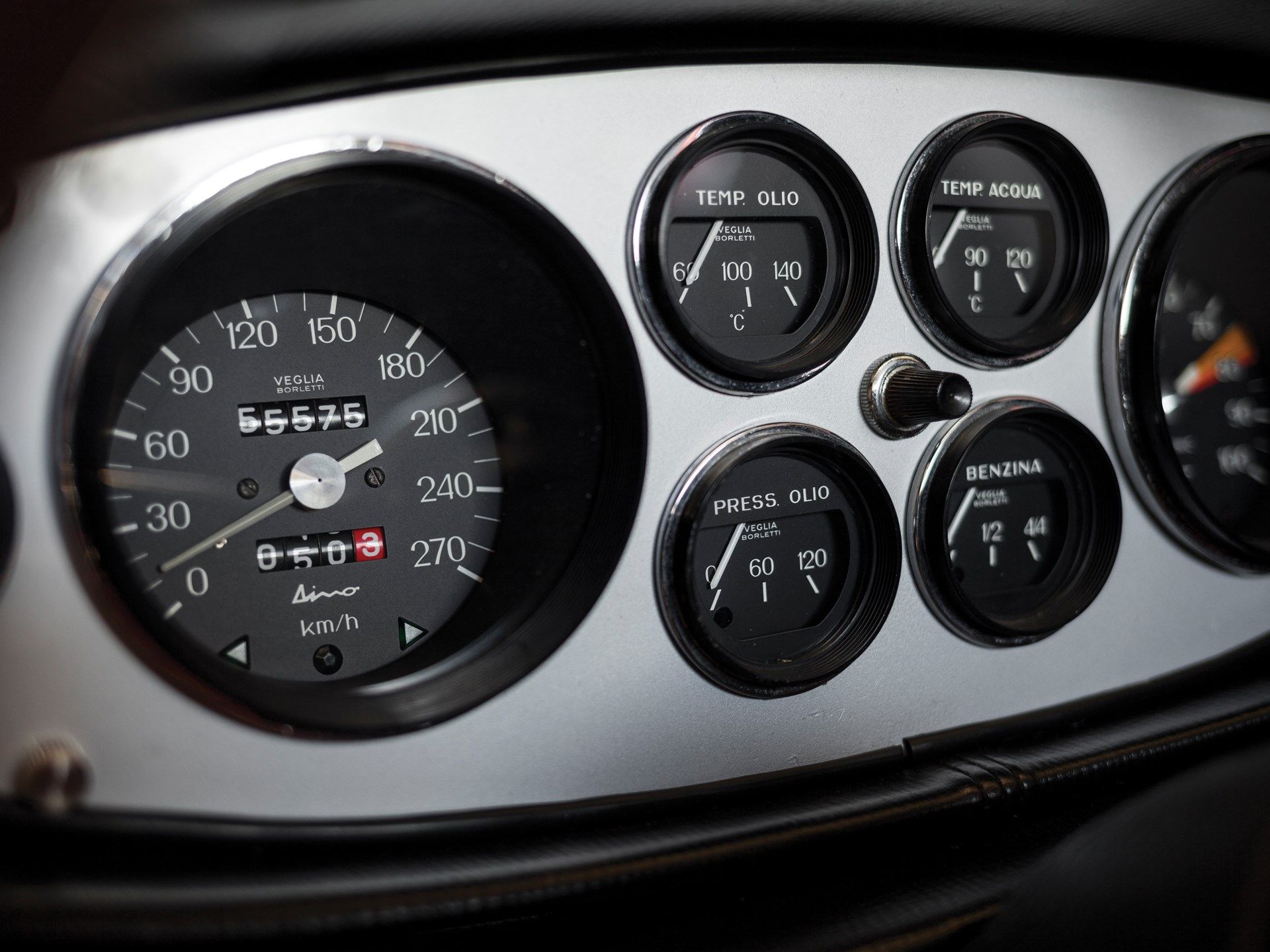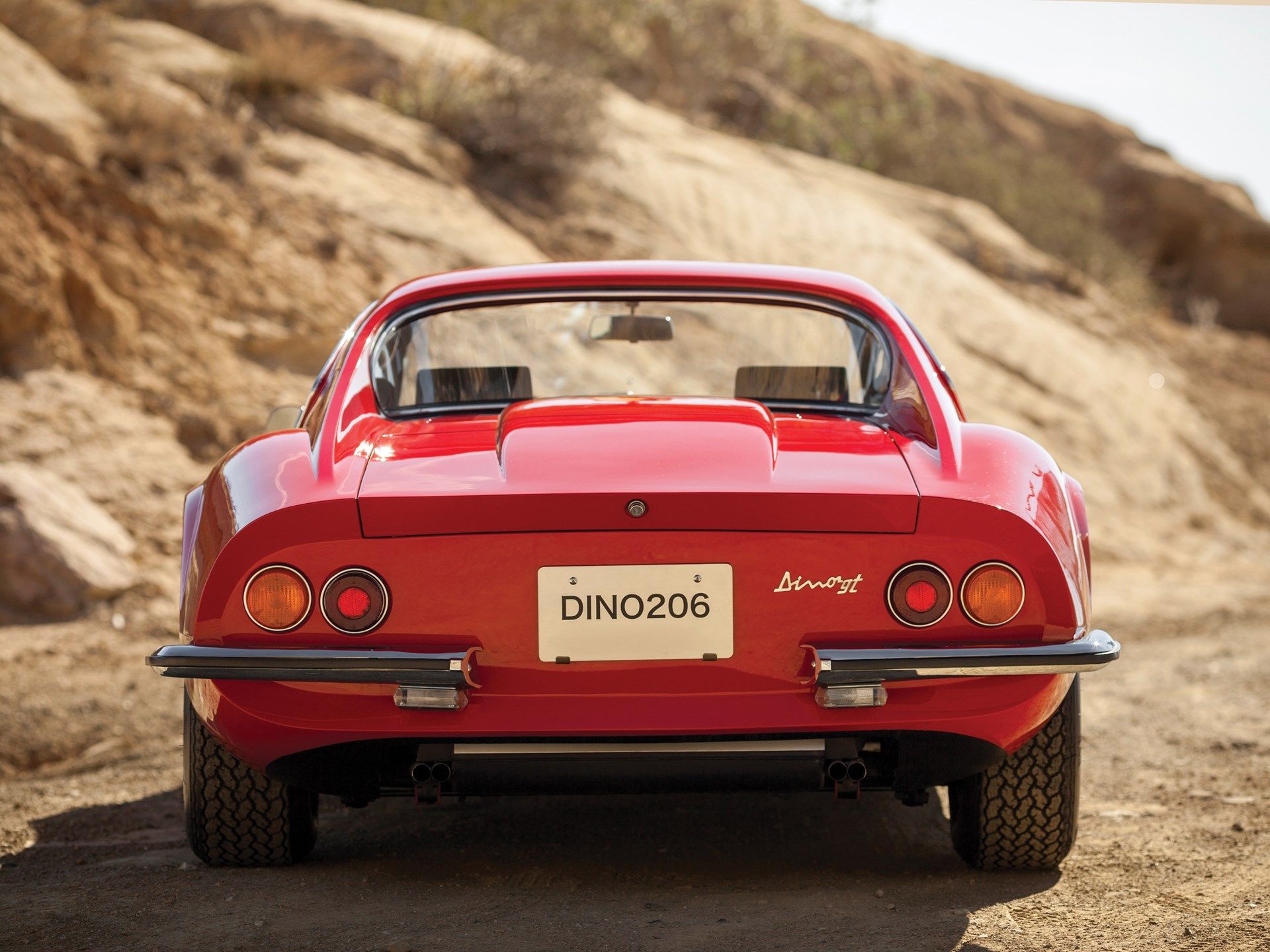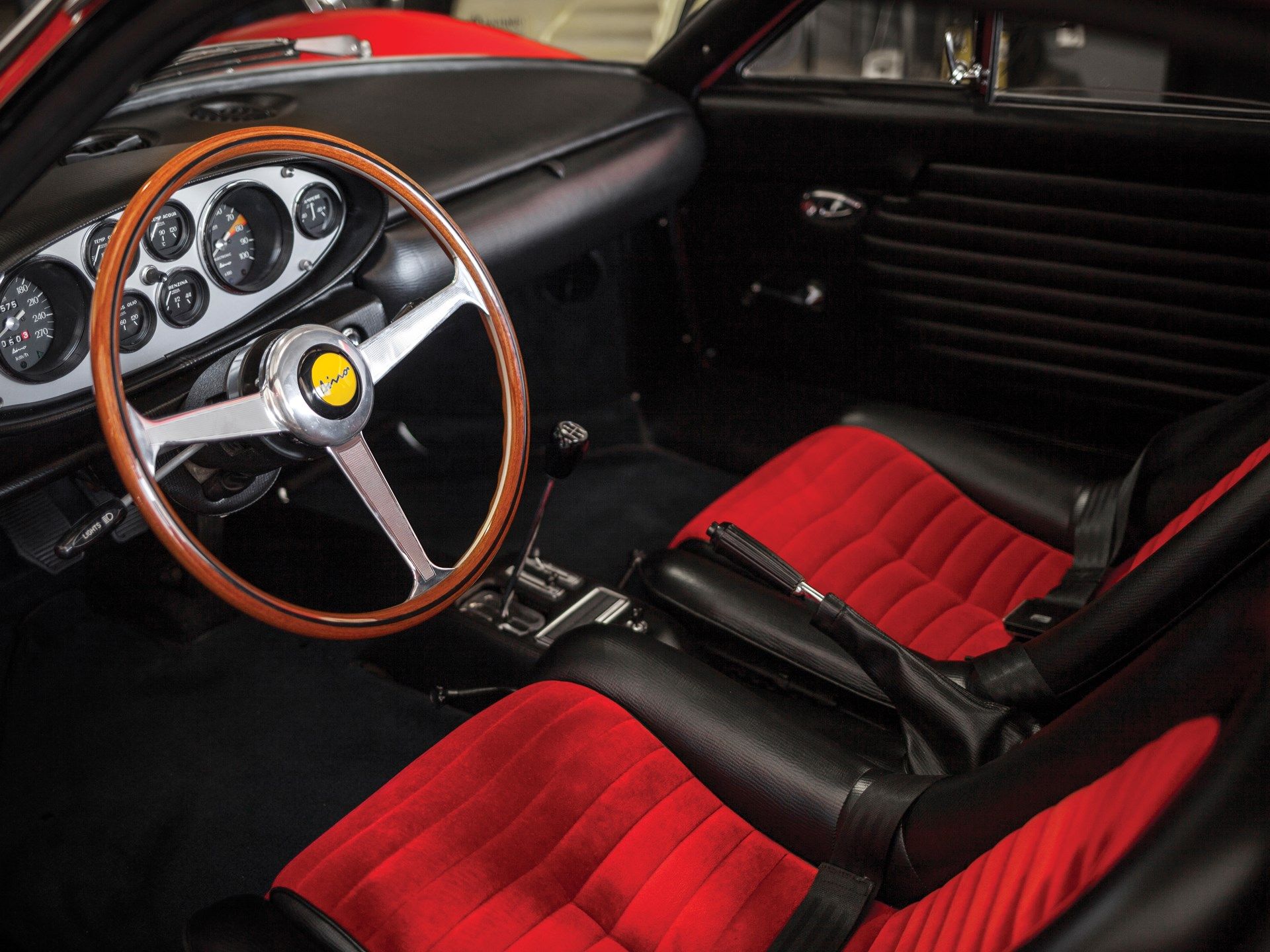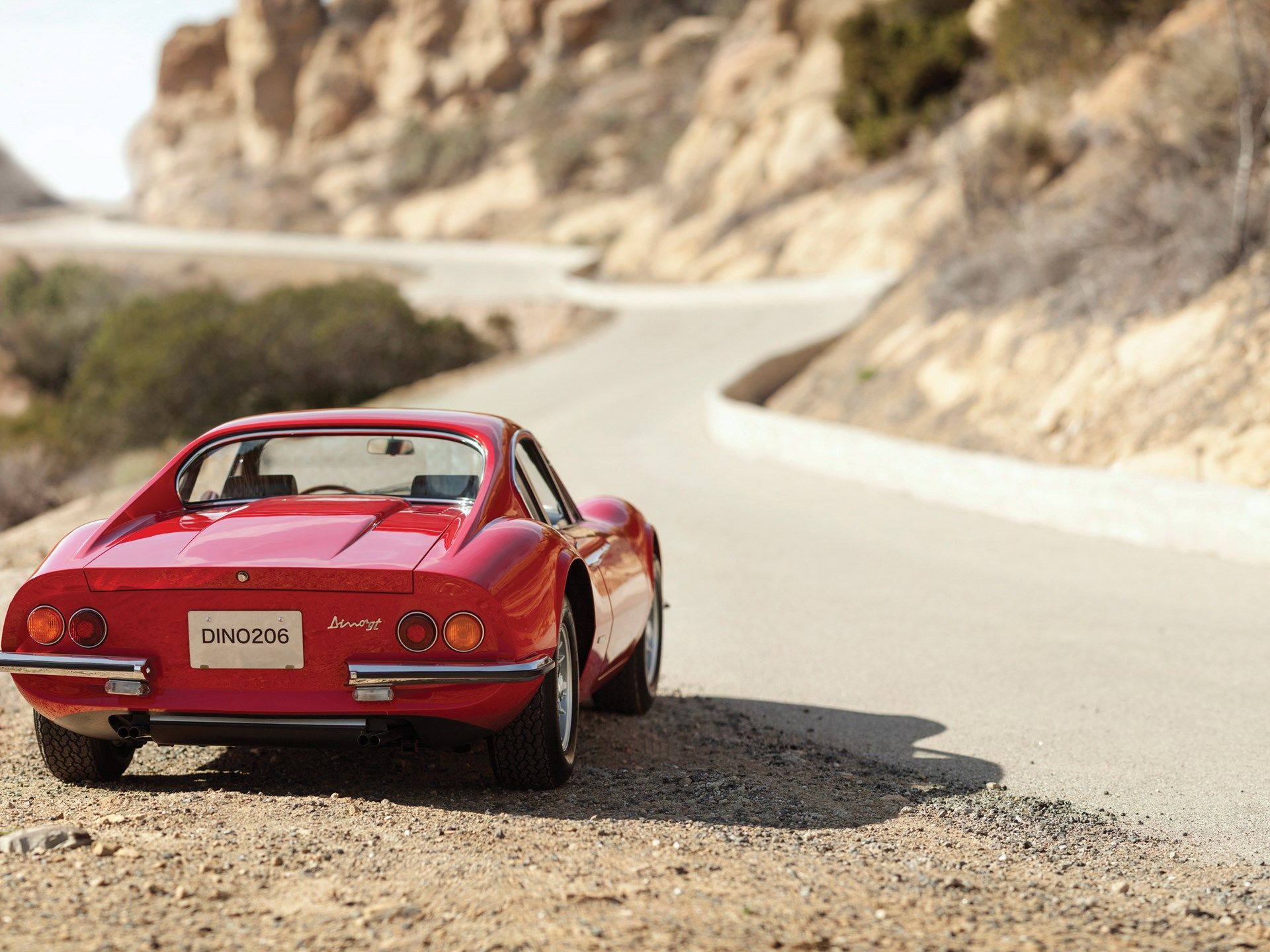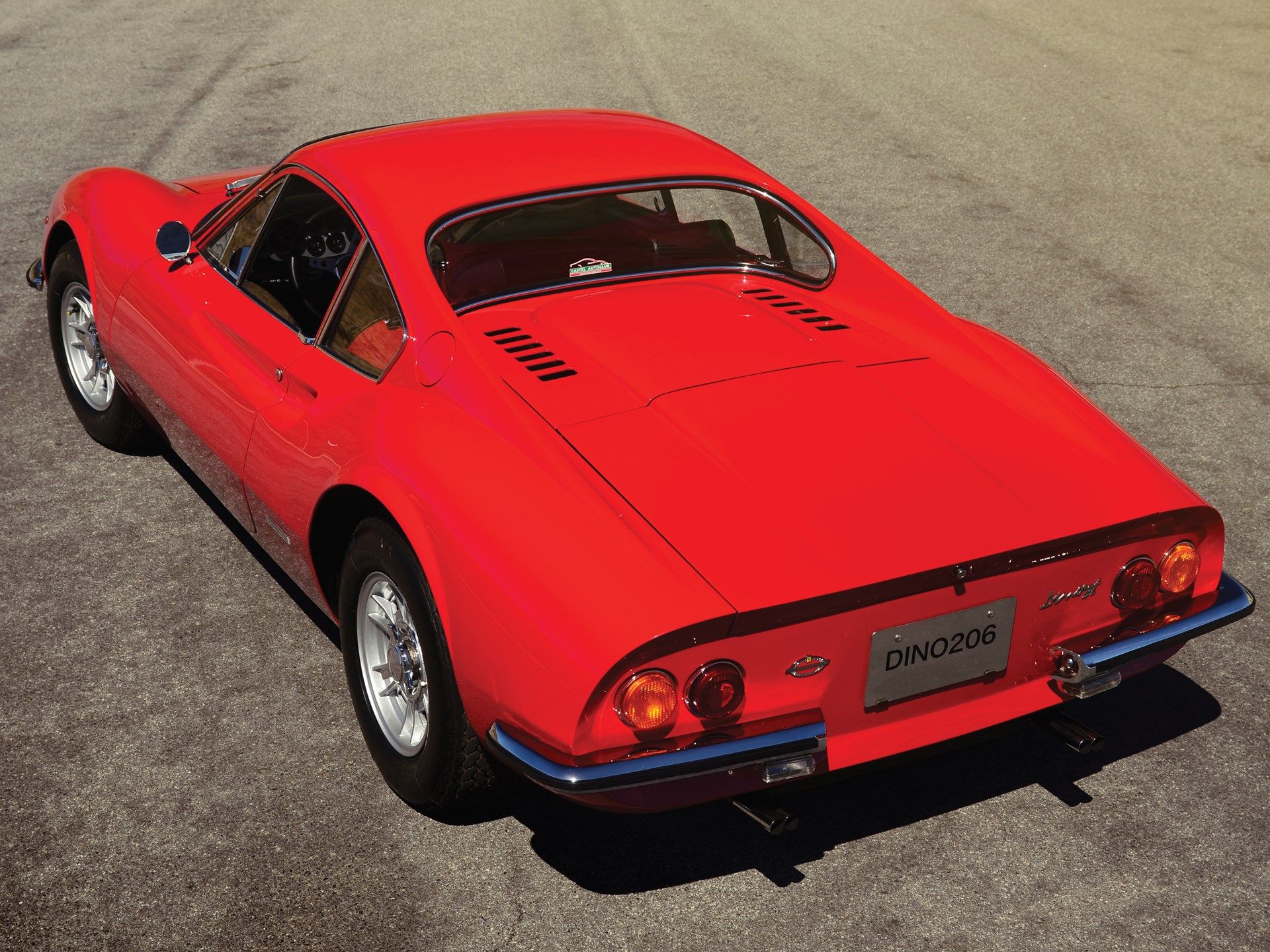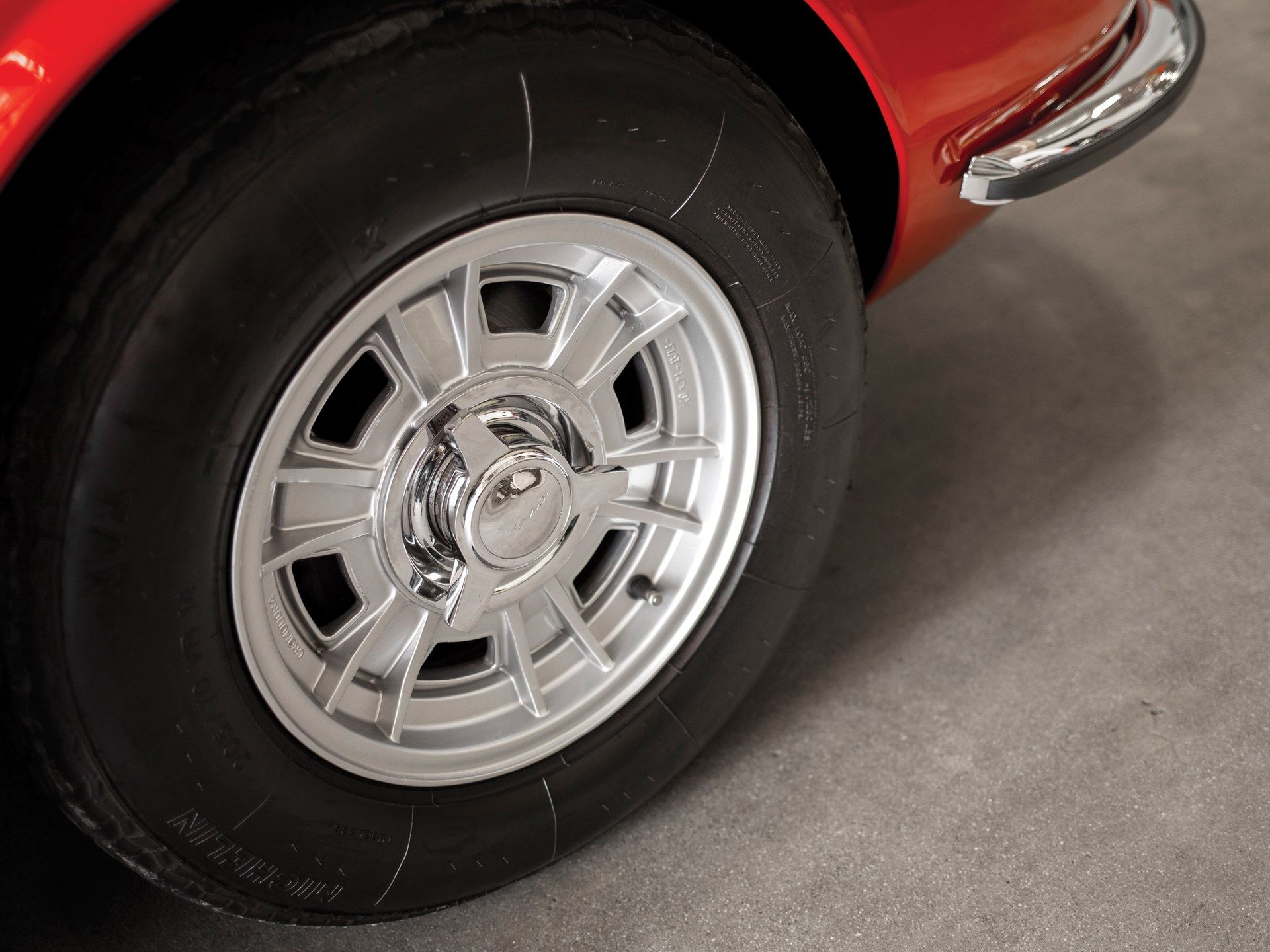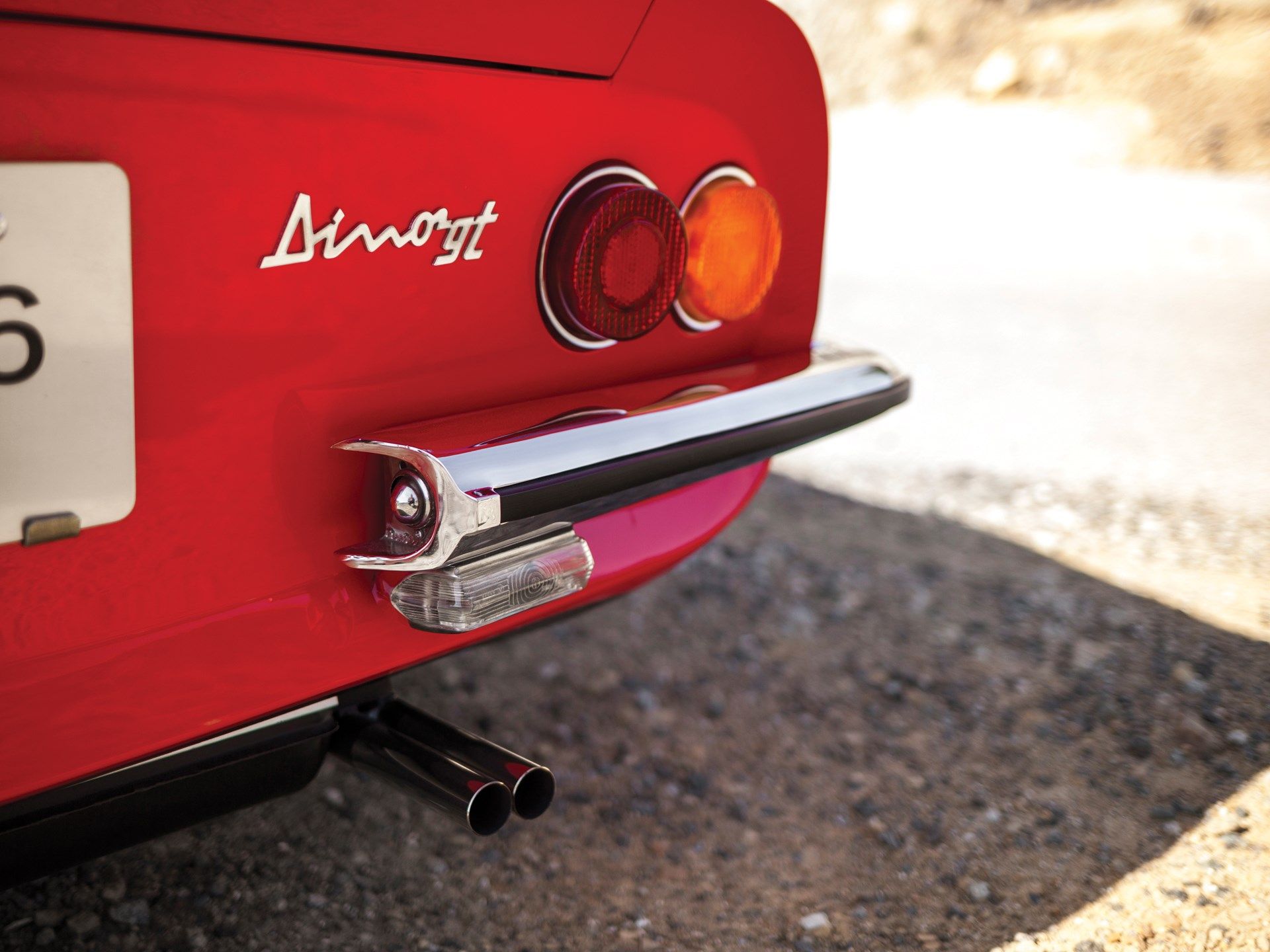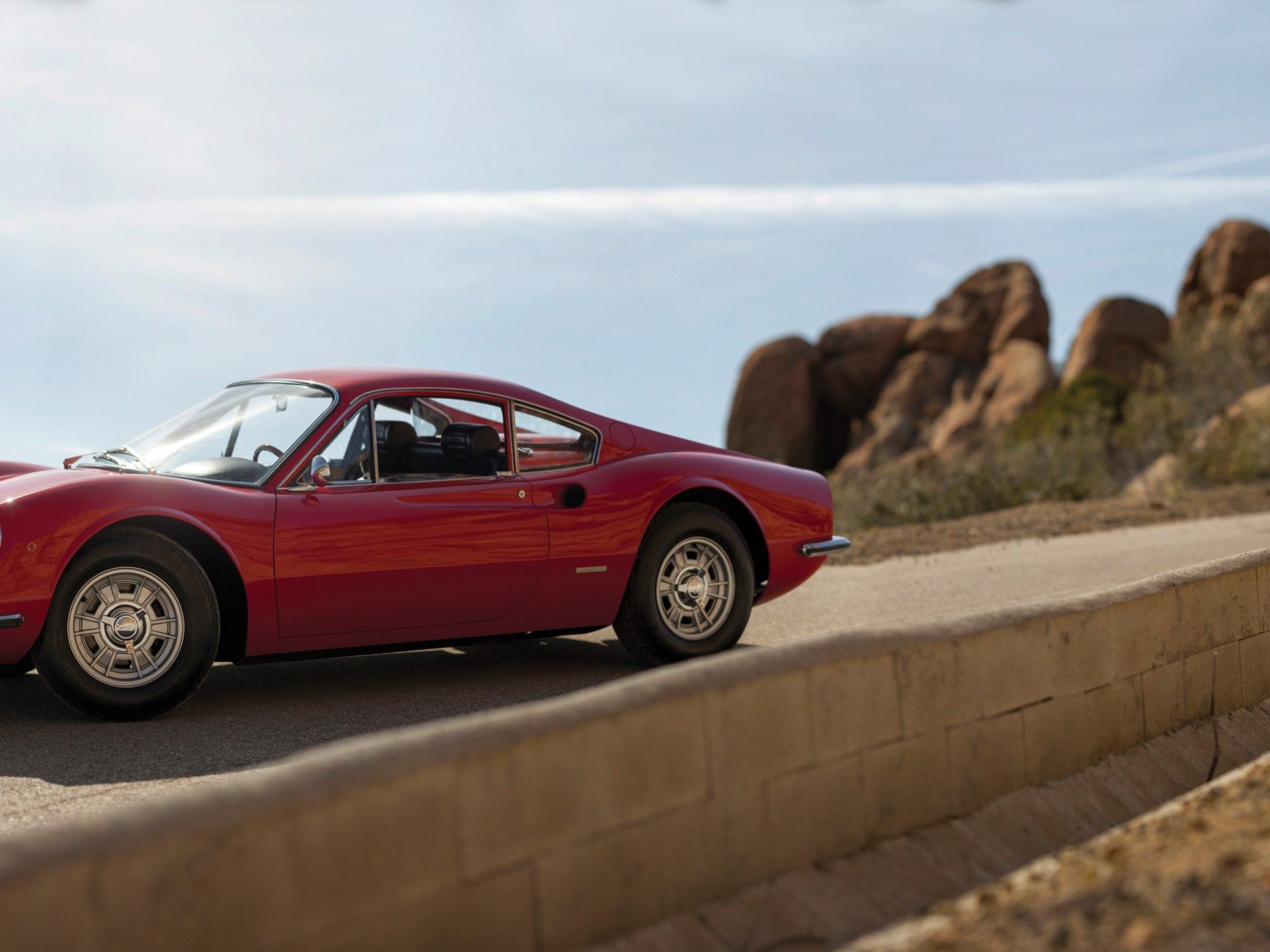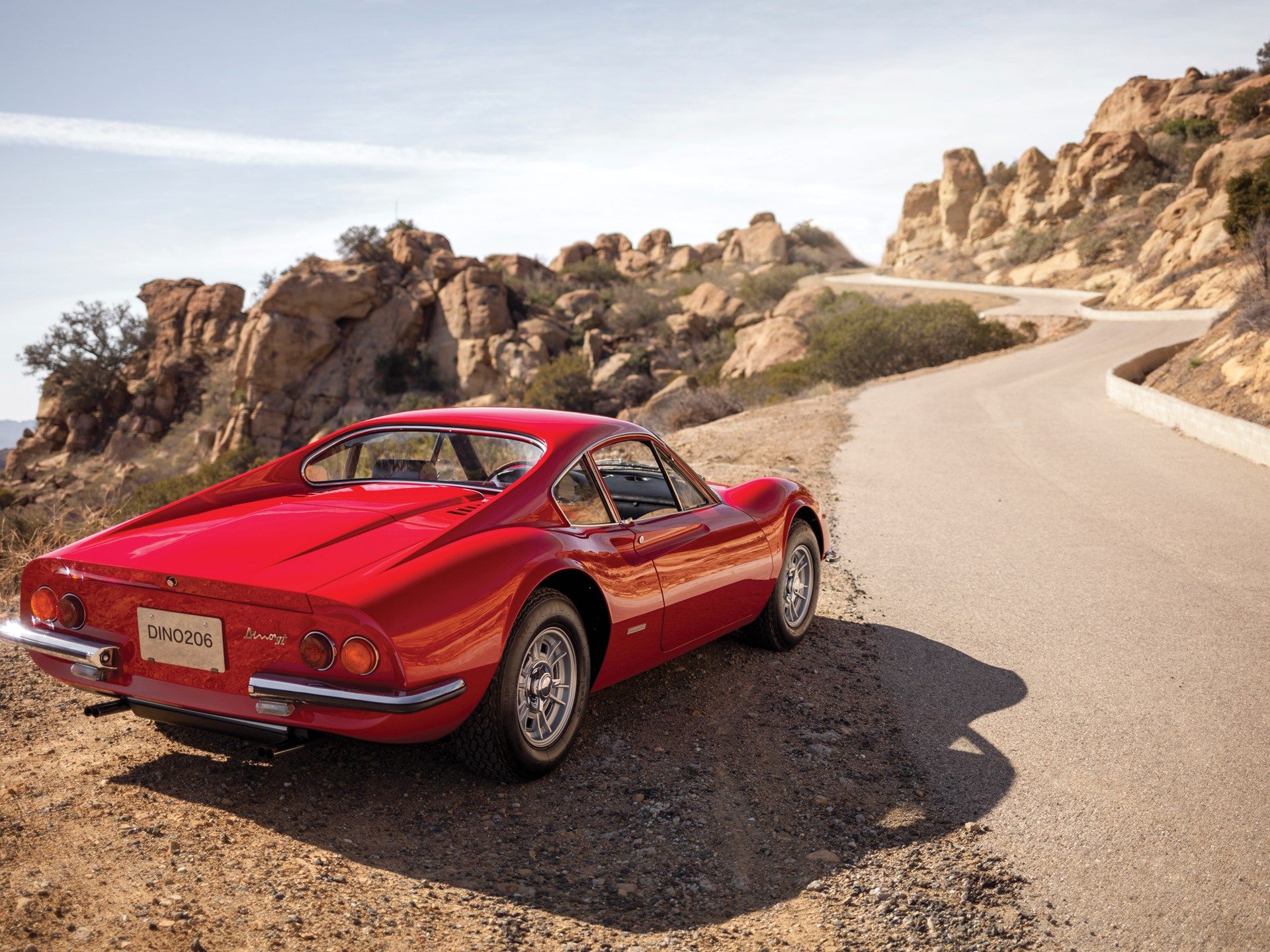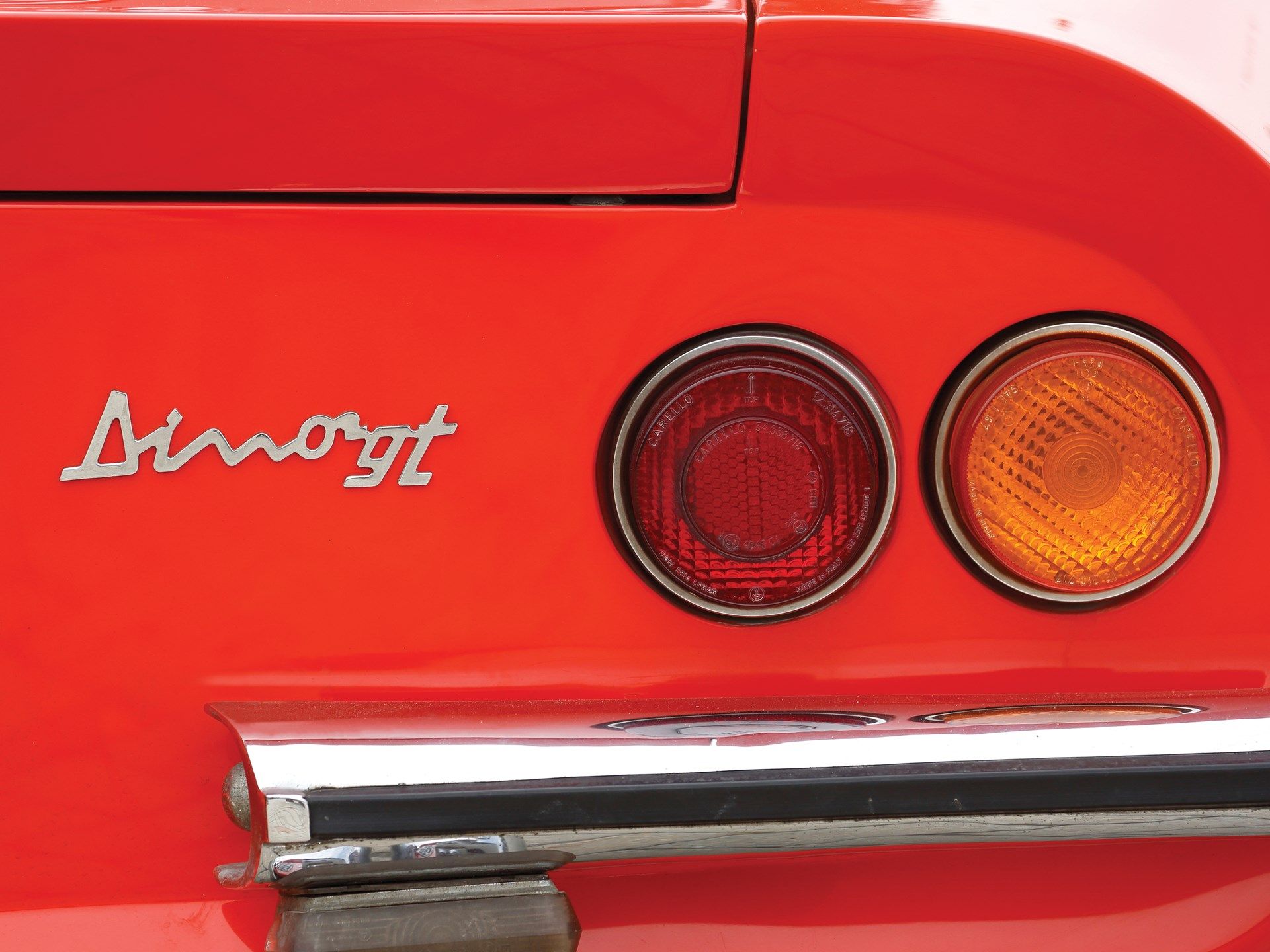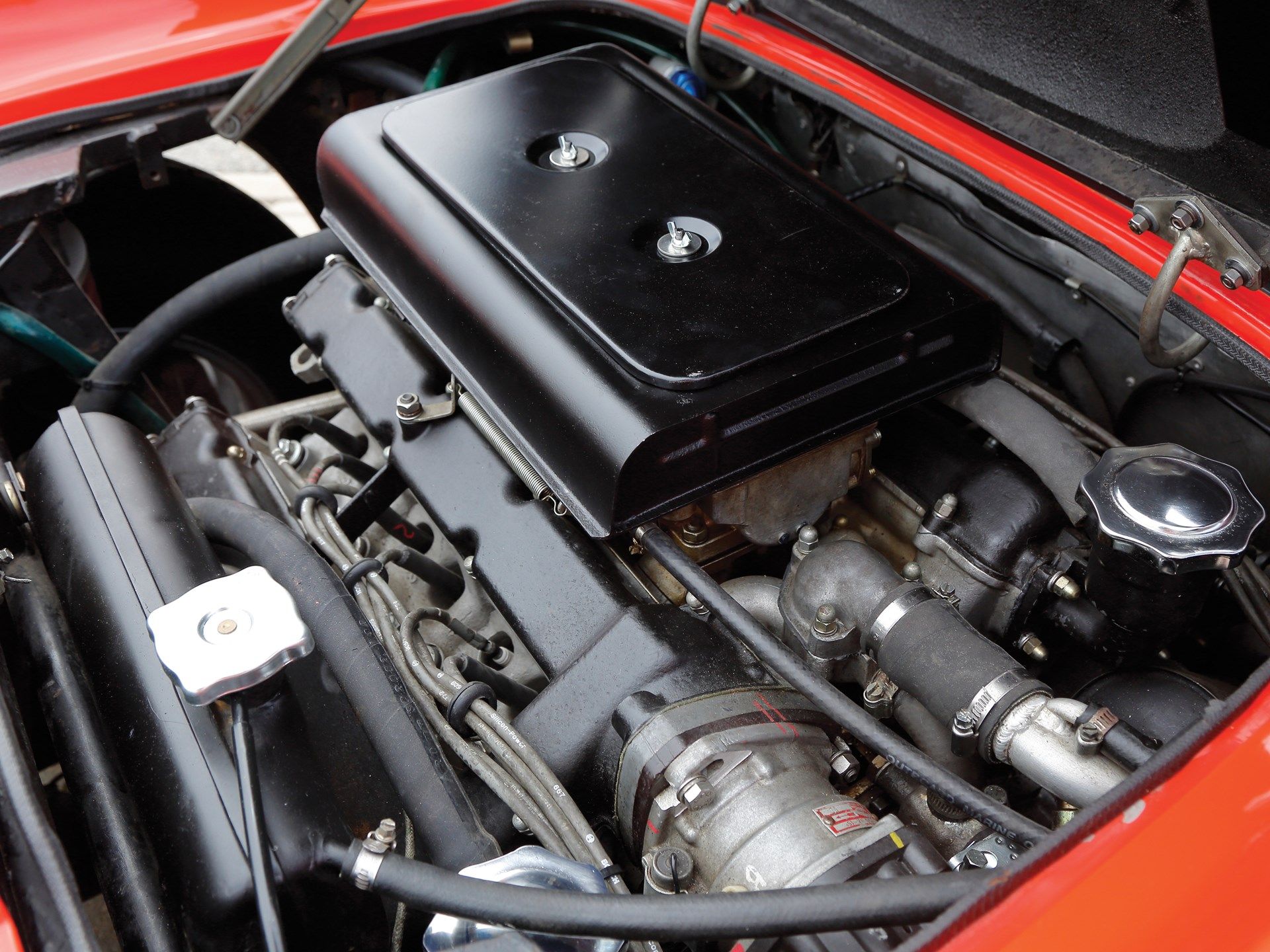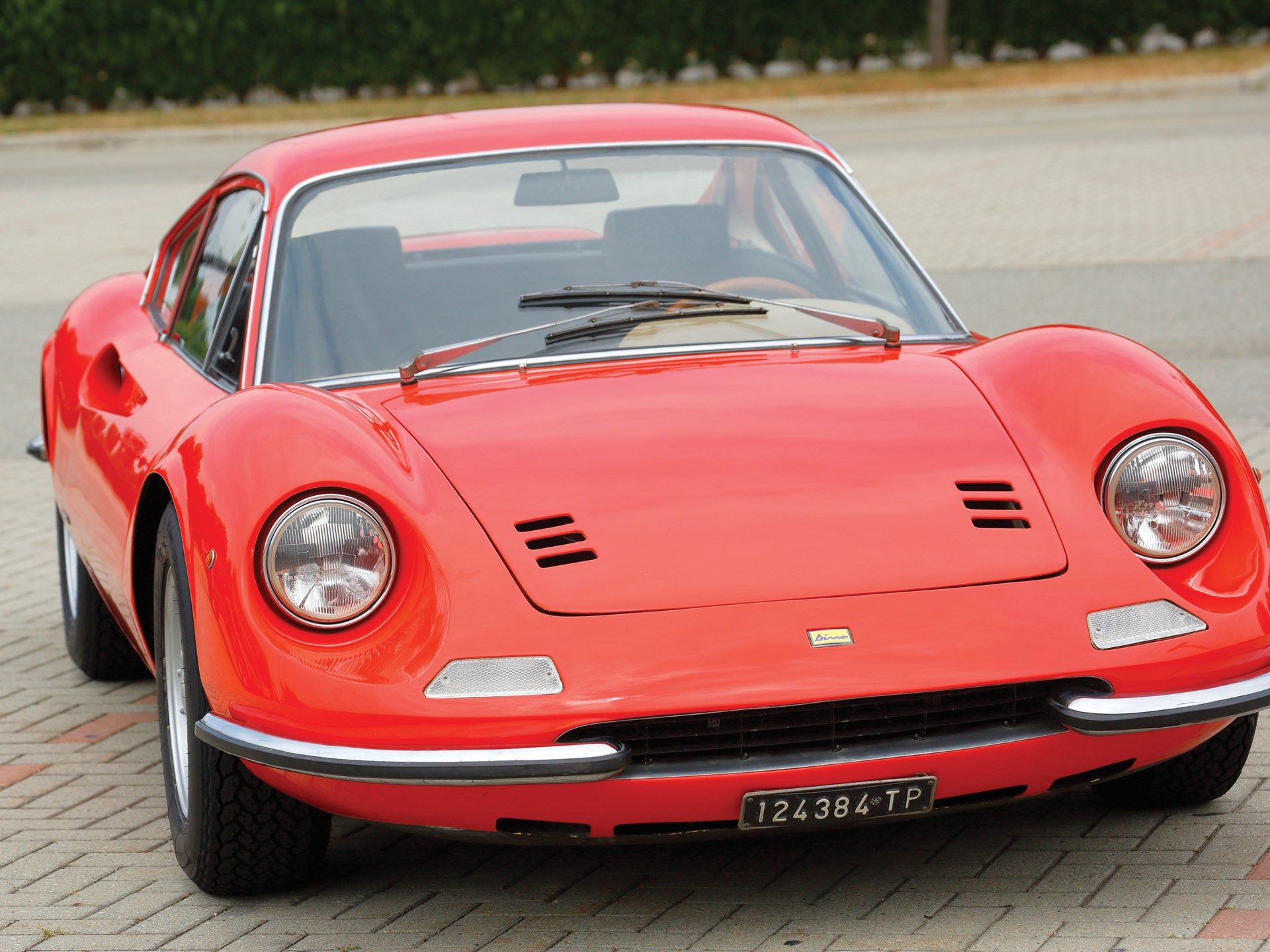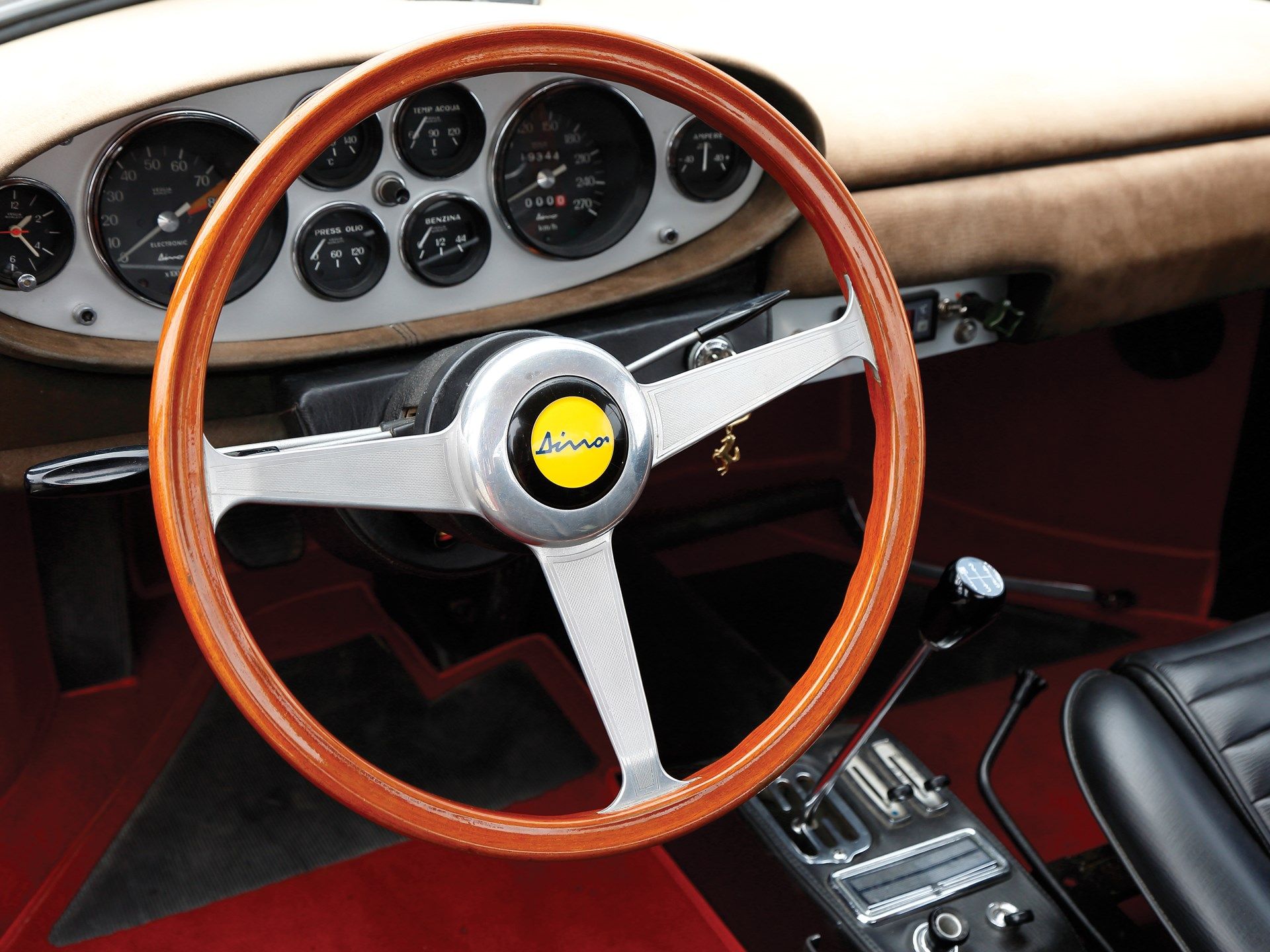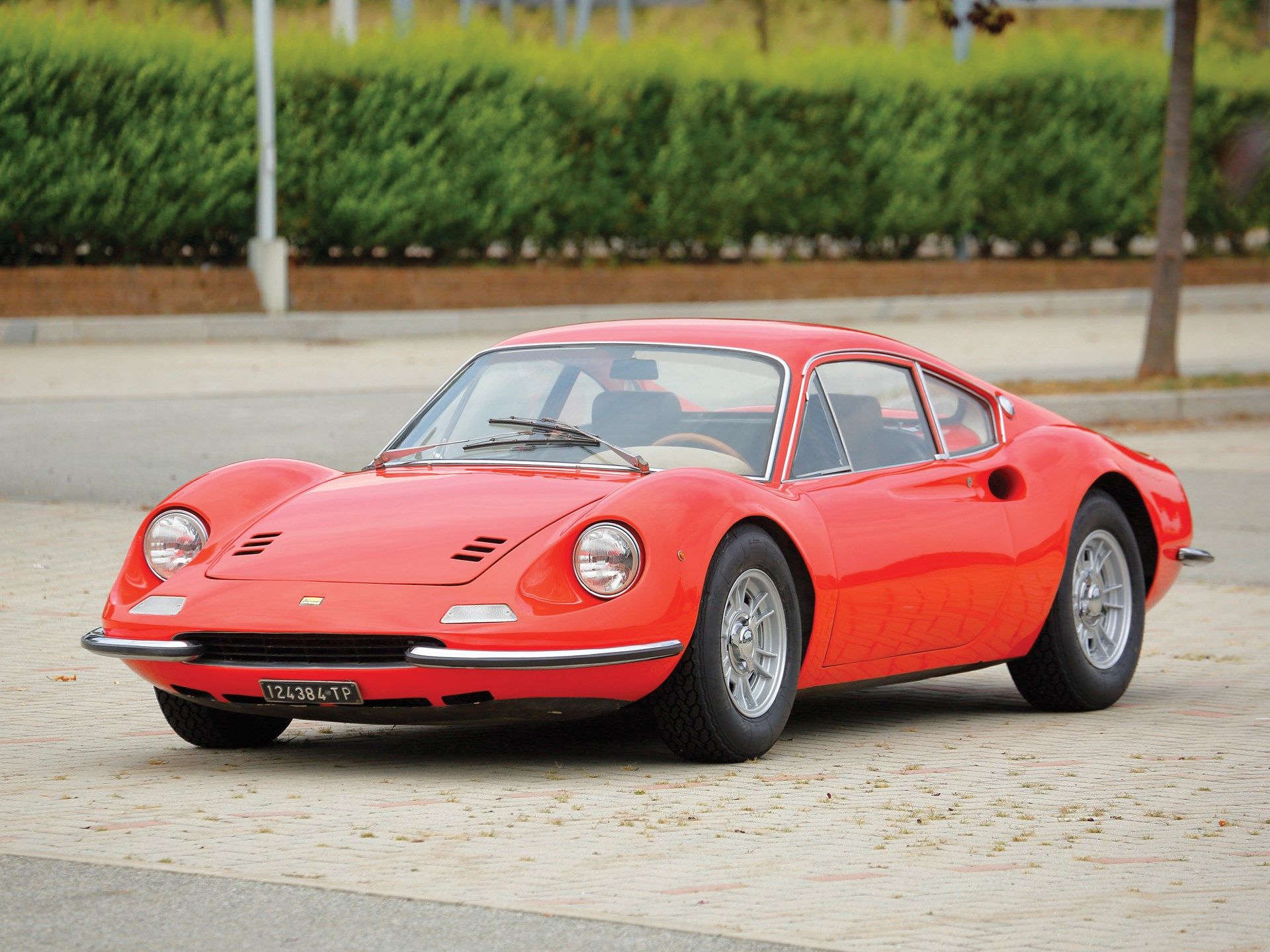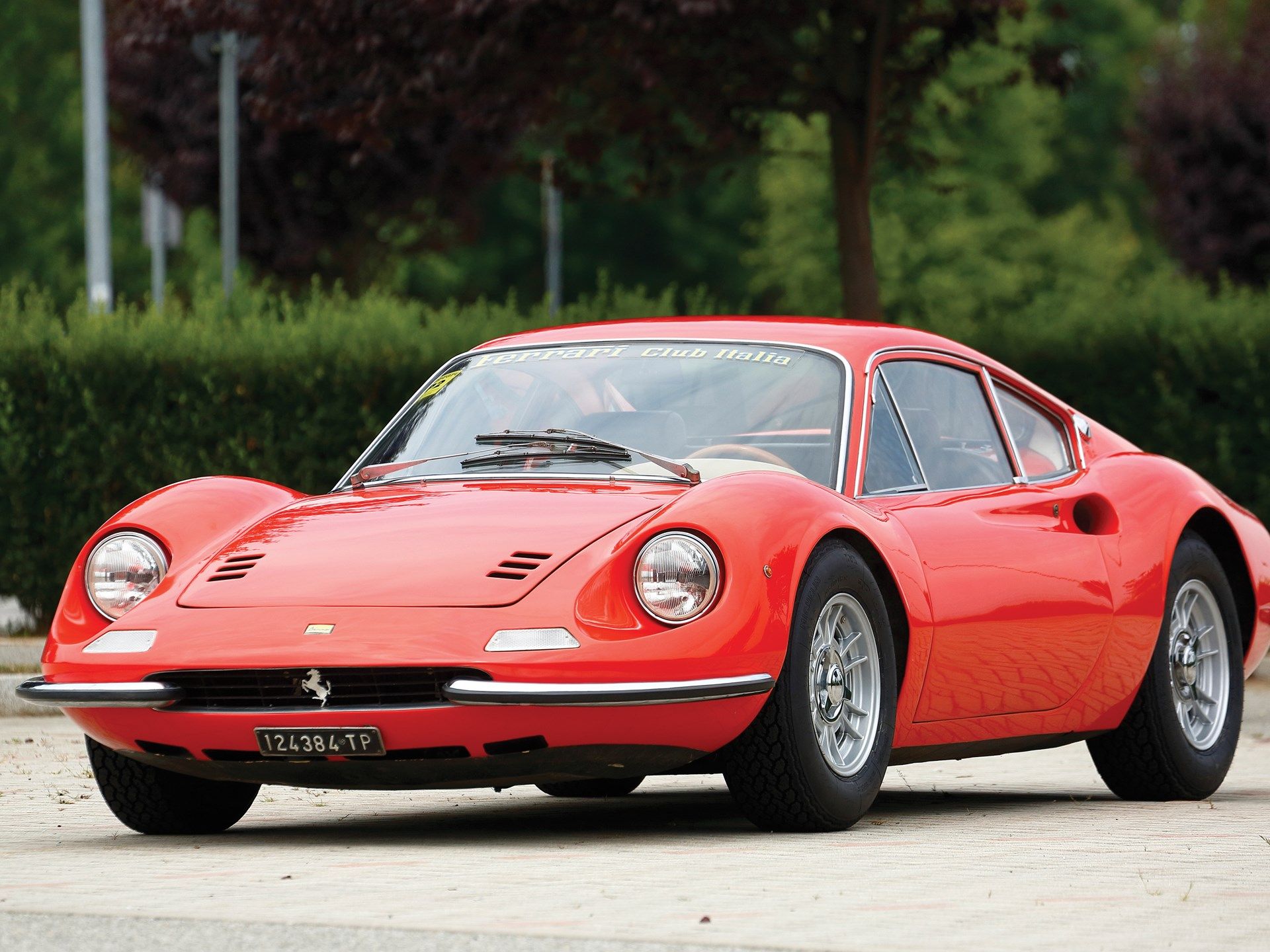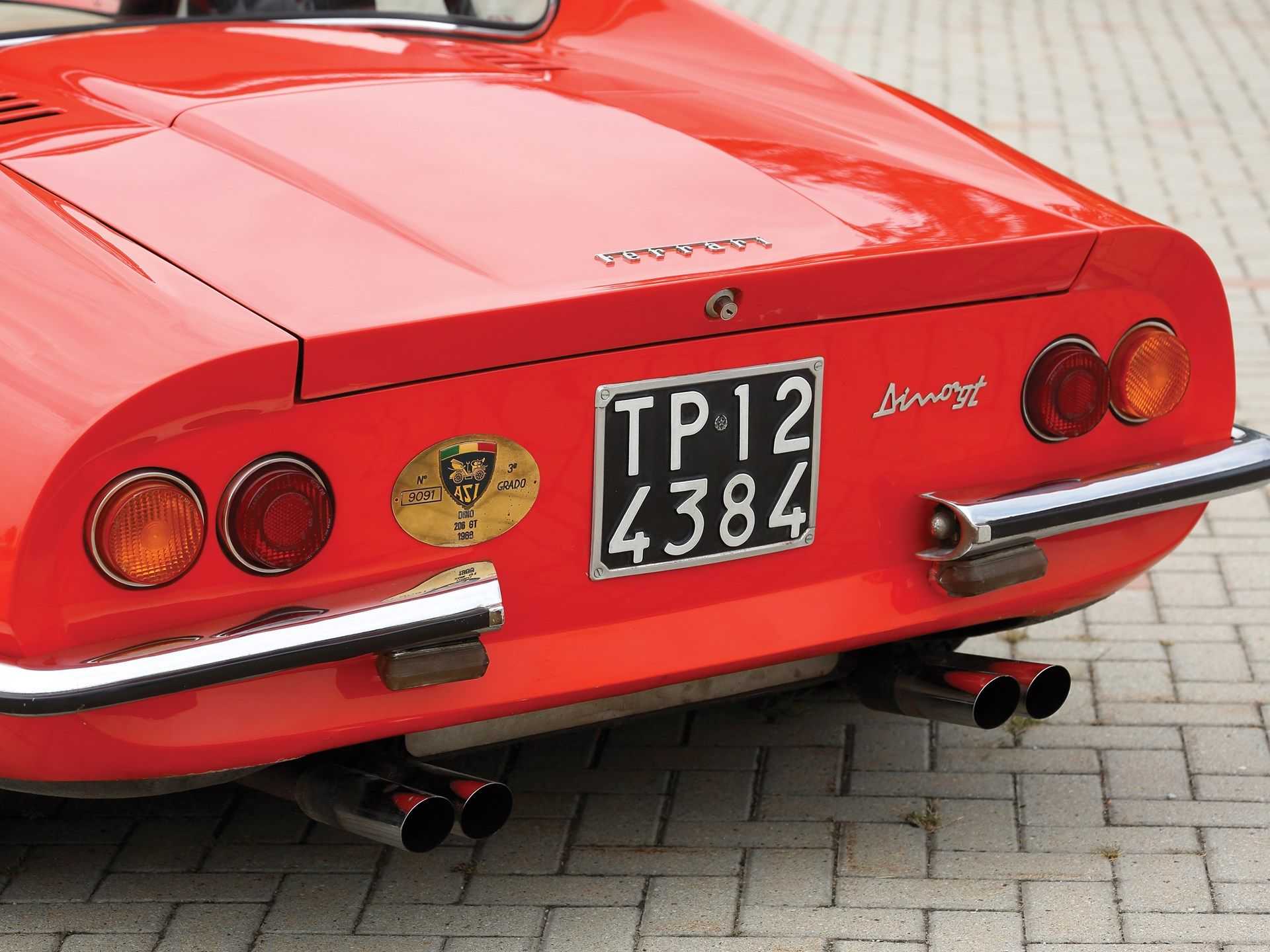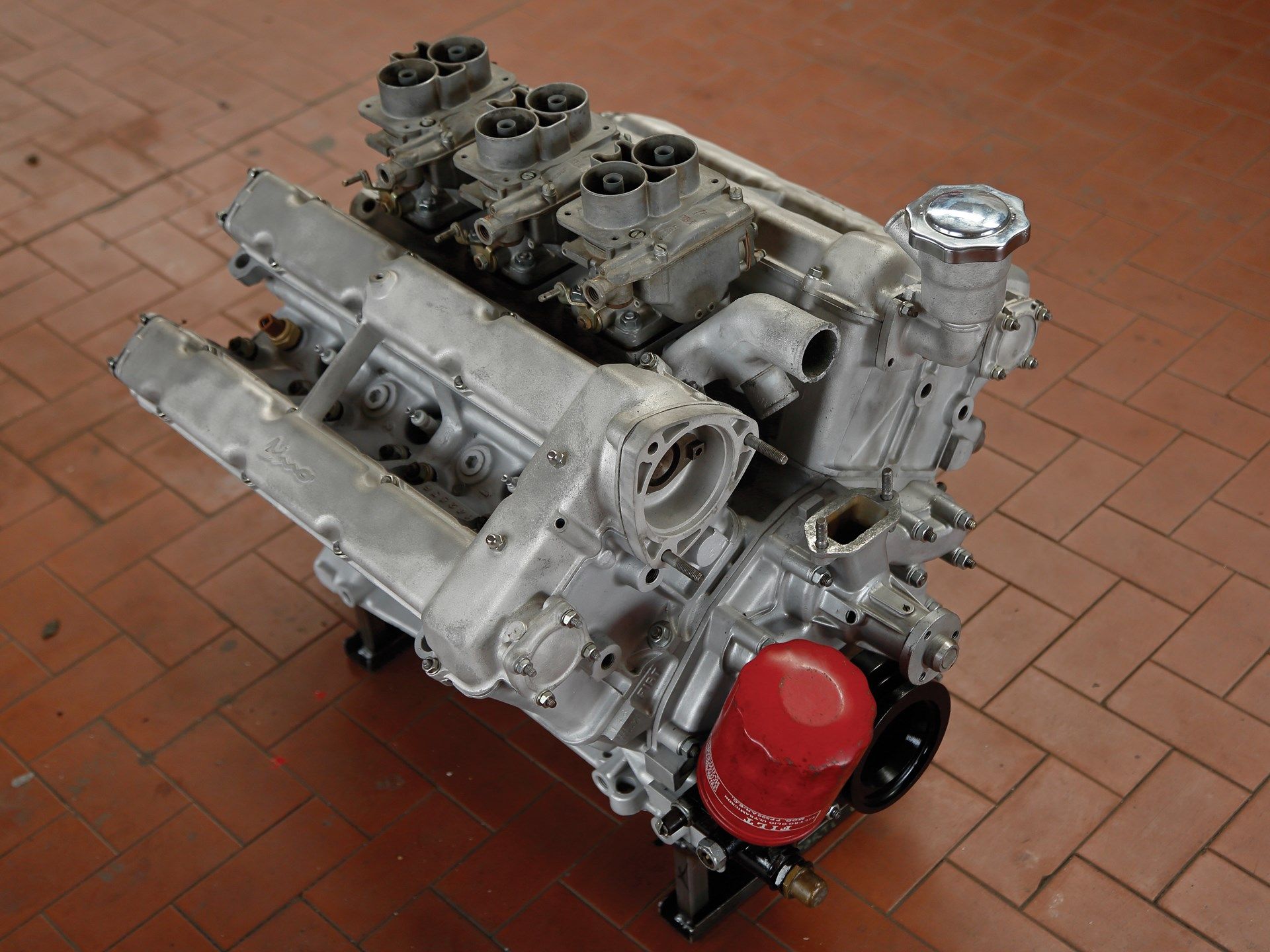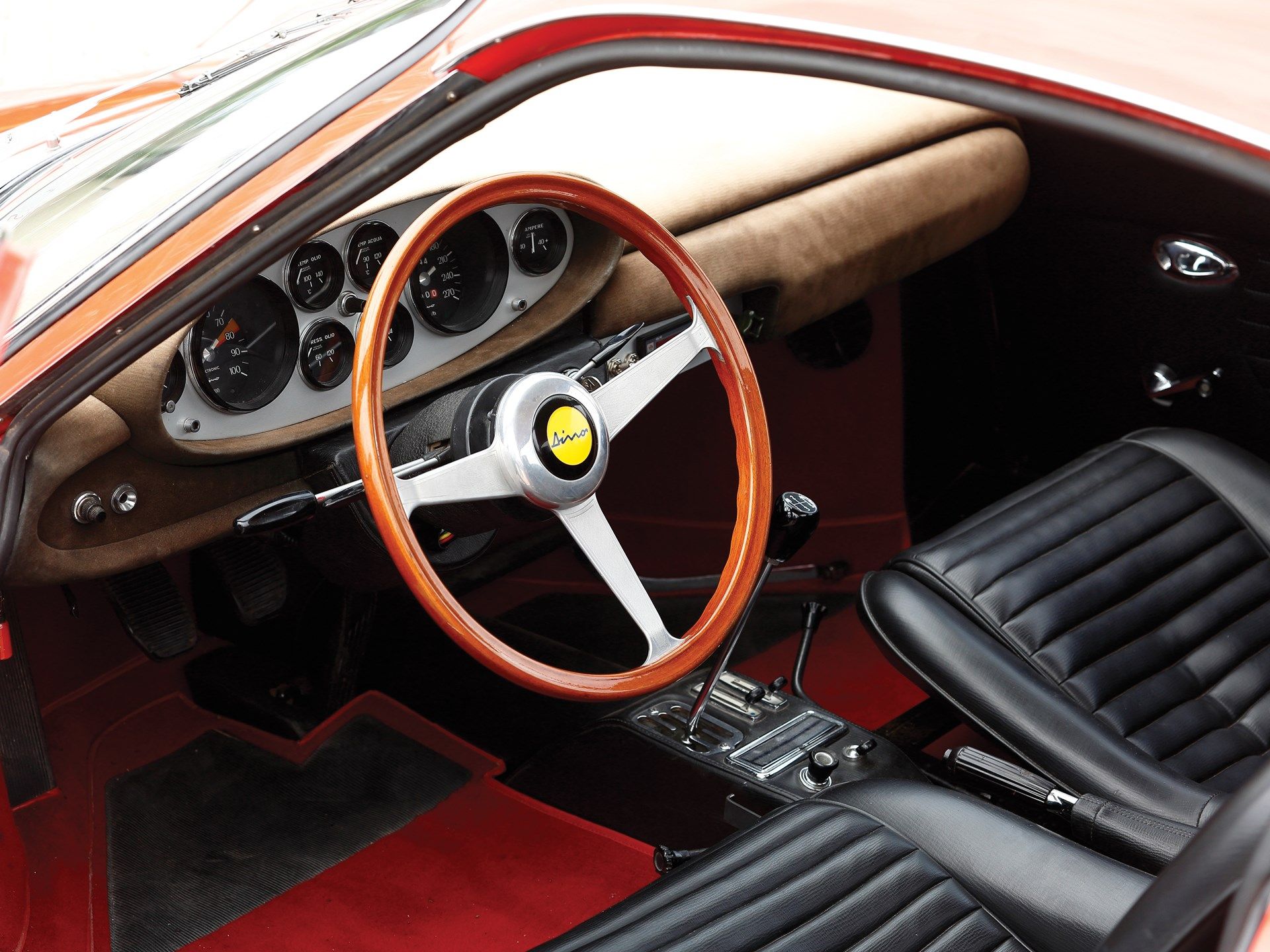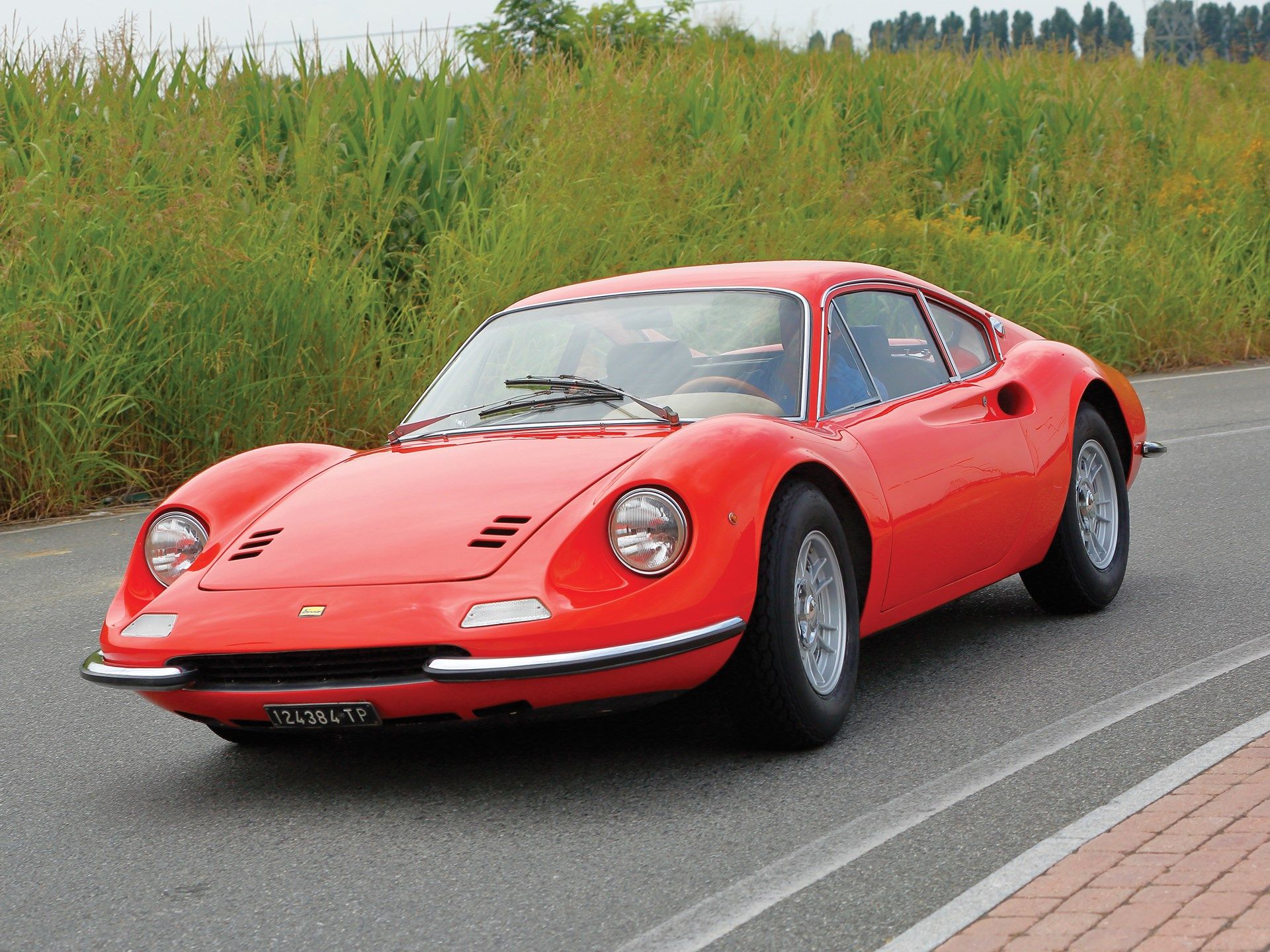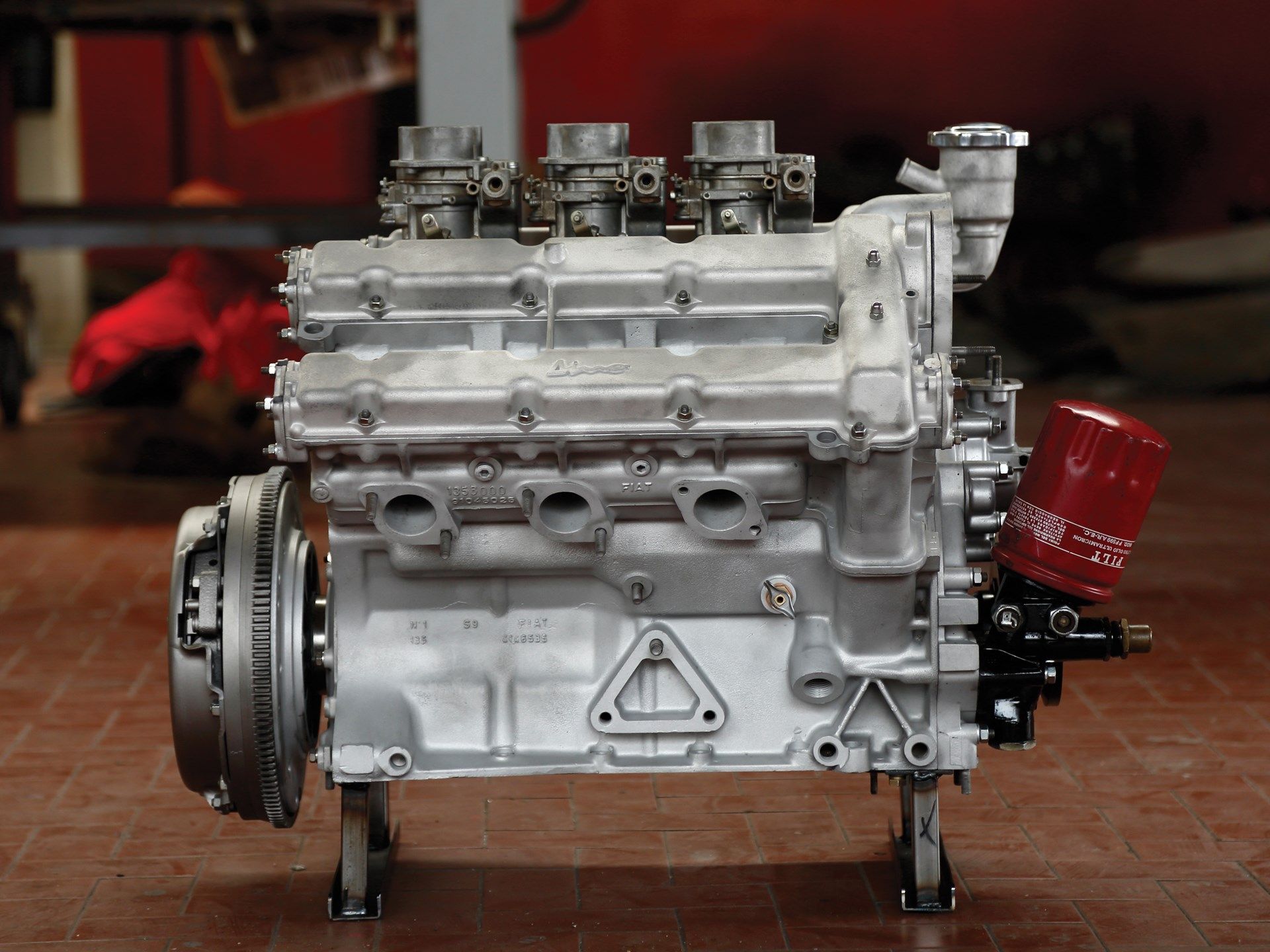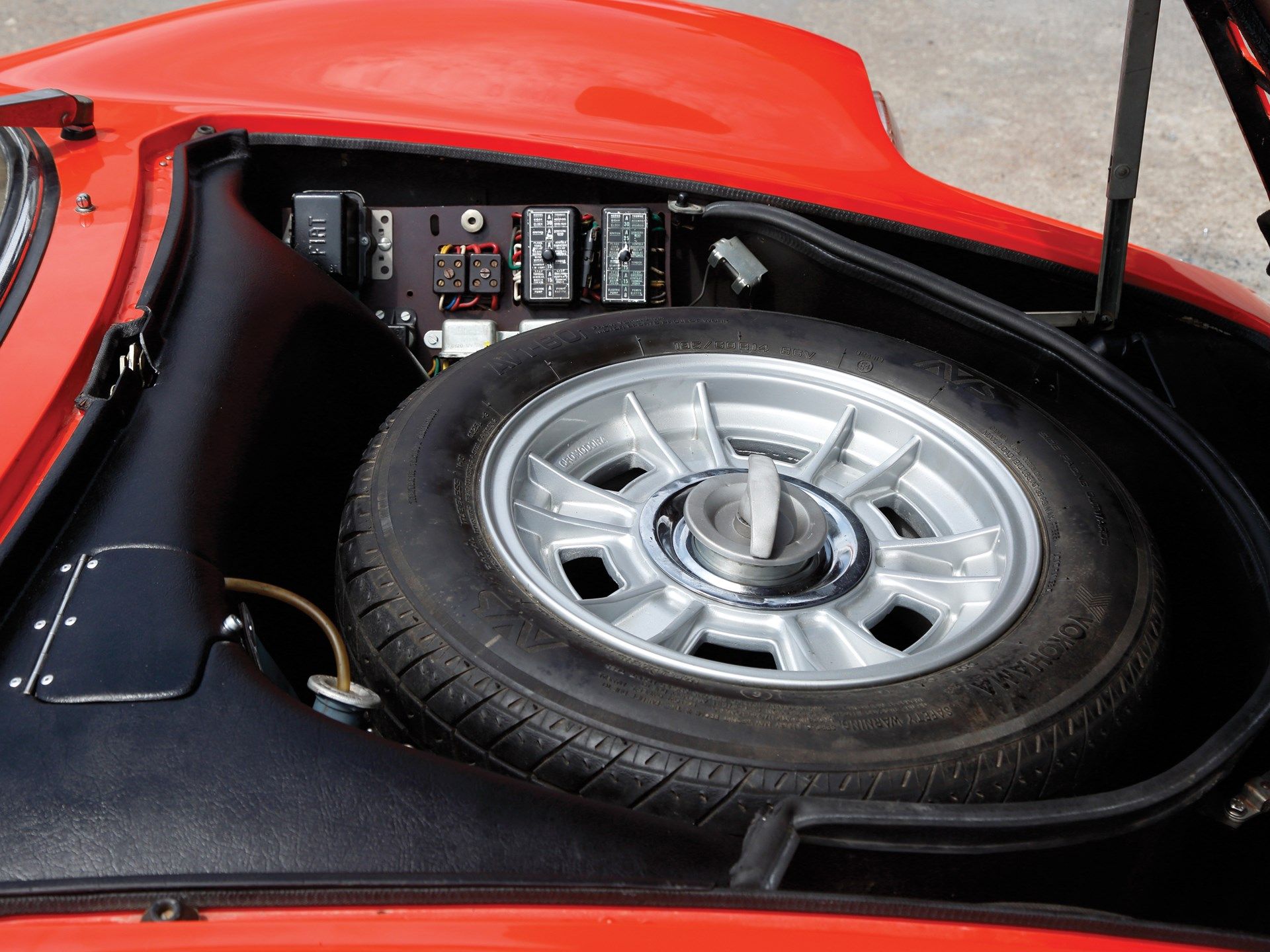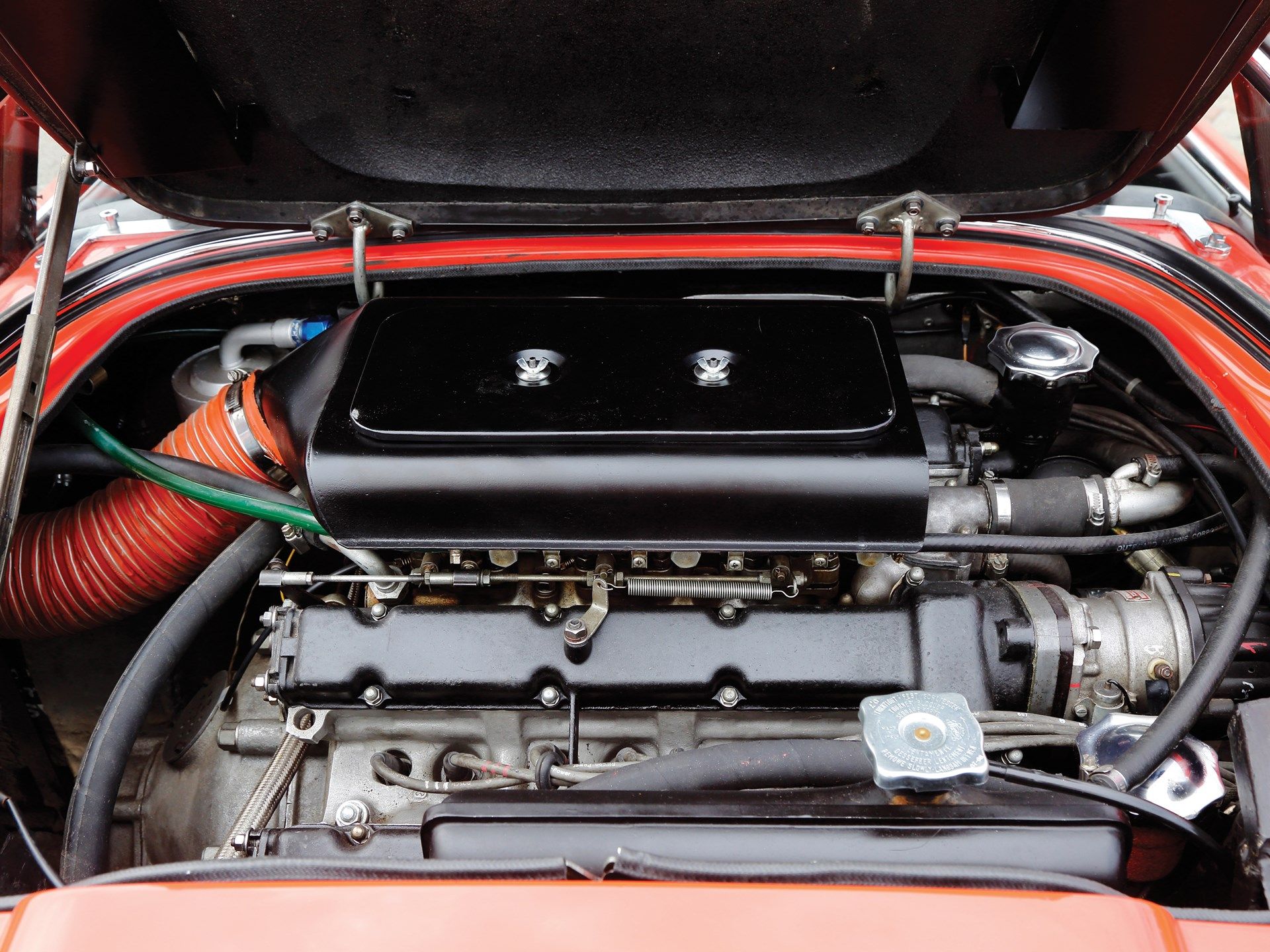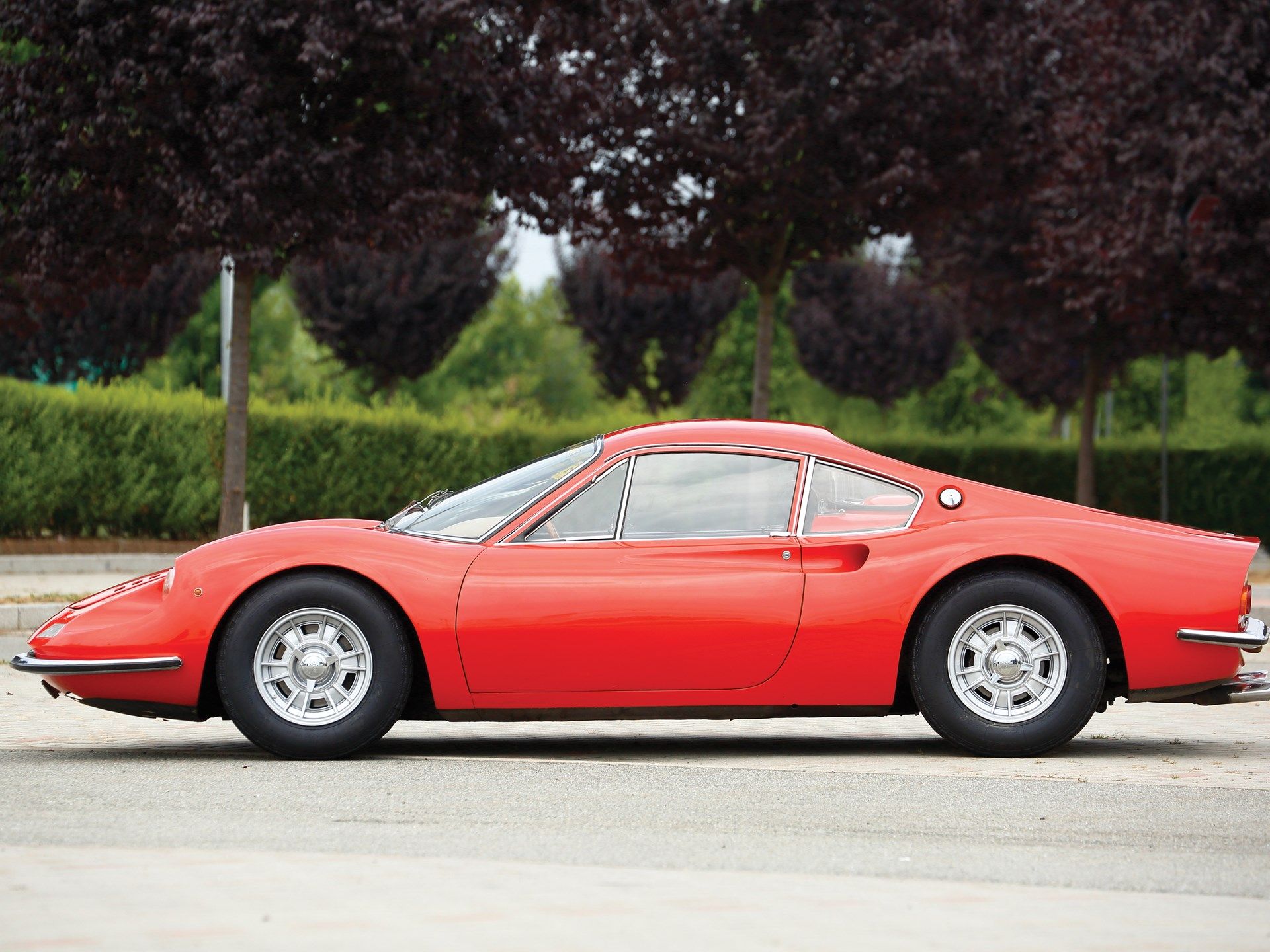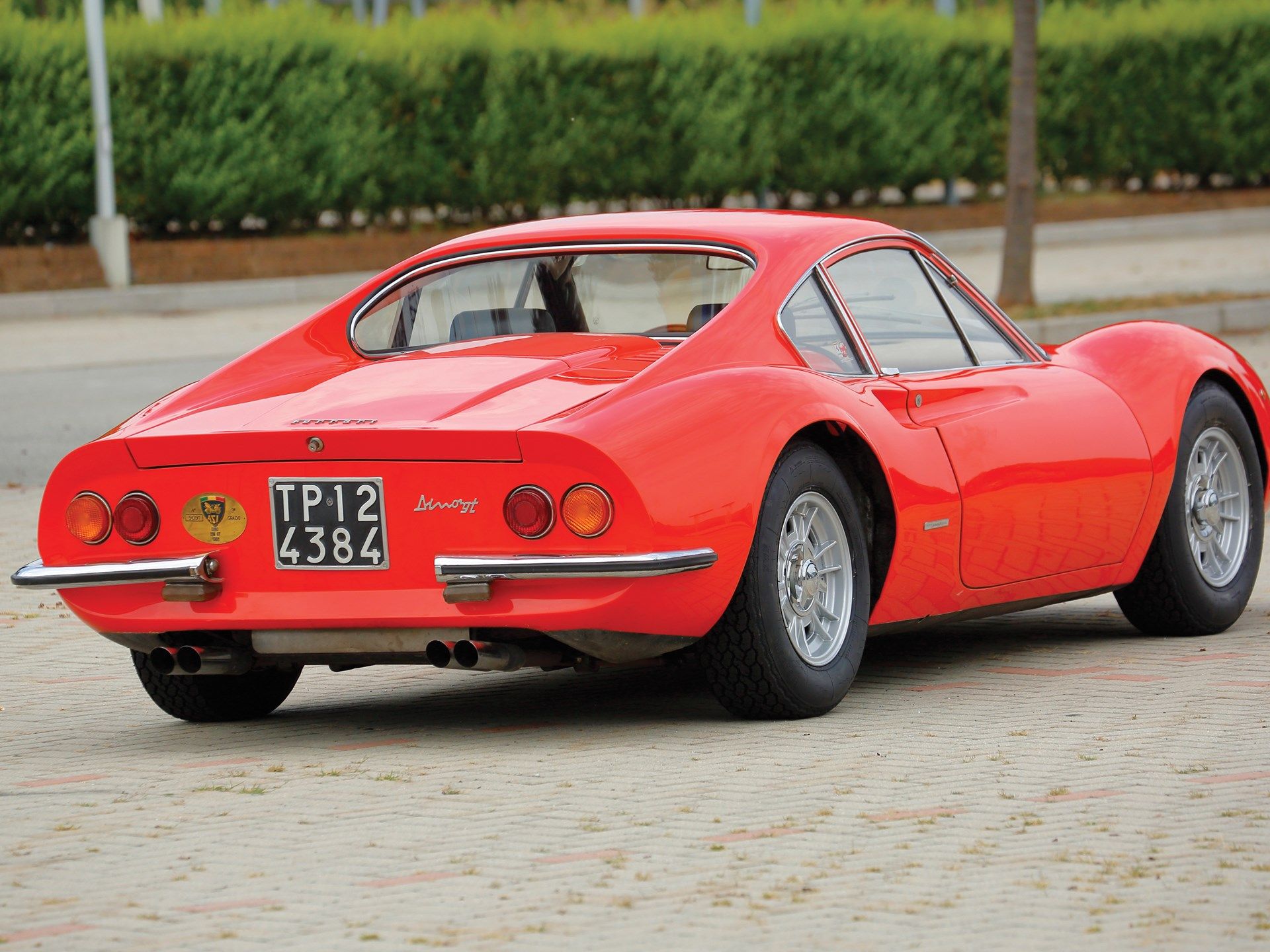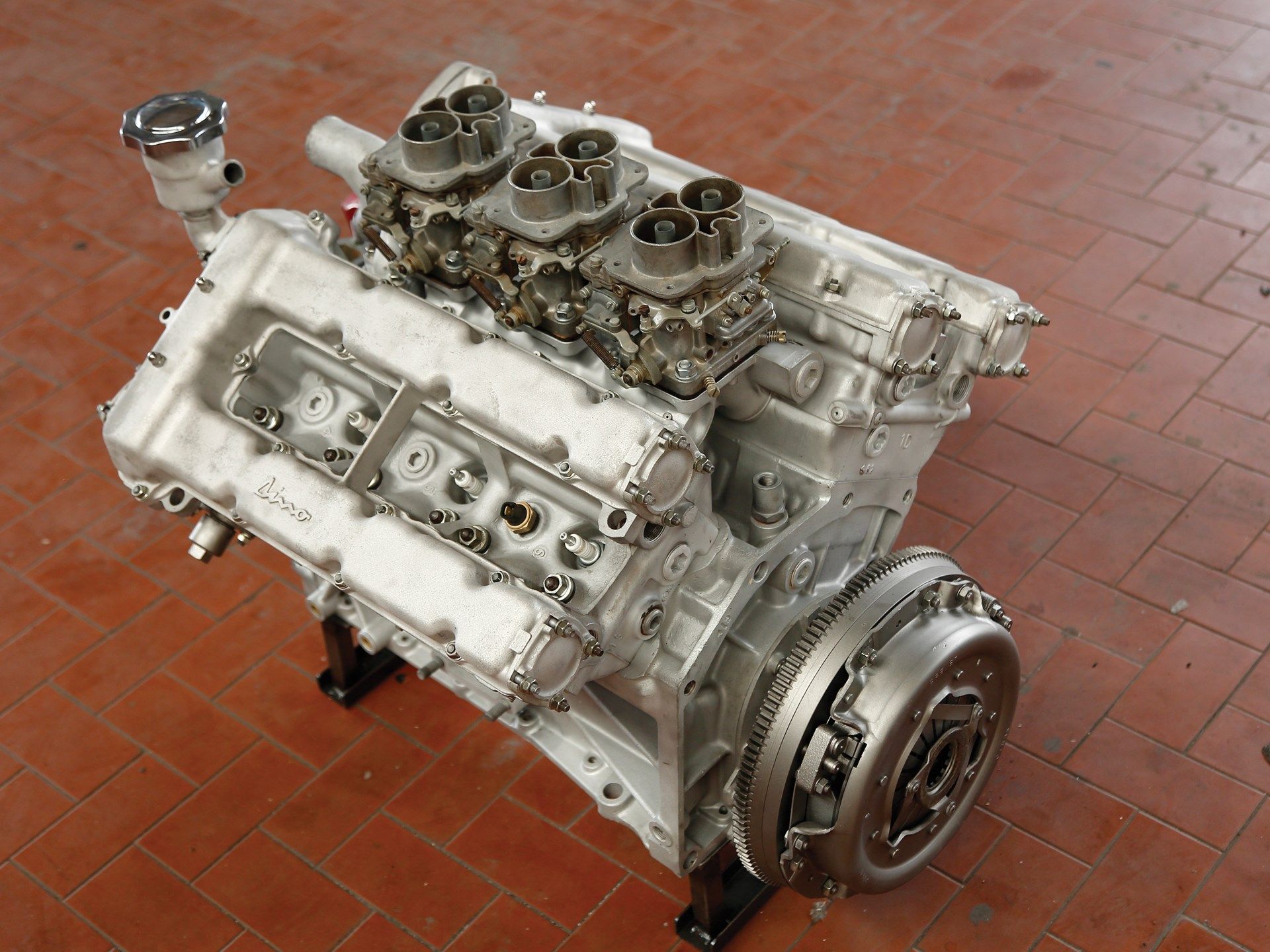In 1968, Ferrari had been on the market as a road car manufacturer for 21 years and was already enjoying massive success. It had already won the Formula One championship and the 24 Hours of Le Mans and launched iconic cars like the 250 GTO, 275 GTB, and the 400 Superamerica. However, the cars were very expensive, and Ferrari was looking for a shot at the more affordable sports car market. And it created the Dino for this exact purpose.
Launched in 1968, the first Dino was called the 206 GT. Powered by a 2.0-liter V-6, it was designed by Pininfarina's Leonardo Fioravanti and produced until 1969. The Dino was updated in 1969 and renamed the 246 GT. A convertible model called the GTS was also introduced. The original Dino was phased out in 1974, but a redesigned model called the 308 GT4 was launched in 1973 and kept into production until 1980. That's when the Dino brand was dropped altogether, and Ferrari's next affordable sports car was called the Mondial.
Continue reading to learn more about the Ferrari Dino 206 GT.
1968 Ferrari Dino 206 GT
- Make: Array
- Model: 1968 Ferrari Dino 206 GT
- [do not use] Vehicle Model: Array
Dino Marque History
While it's often called the Ferrari Dino, the Dino was actually a stand-alone marque named to honor Enzo Ferrari's son, Alfredo "Dino." The name actually goes back to the 1950s, when Dino Ferrari suggested to Enzo the development of a V-6 engine for race cars. The engine was introduced in the late 1950s, but Dino would never see it, as he died in 1956 at the age of only 24 due to muscular distrophy.
The Dino name was first used for a road car in 1966, but not on a Ferrari. As the Italian firm failed to use the V-6 engine in the new Formula Two category due to not being able to meet homologation rules, it went to Fiat to co-produce a car with the same mill. Thus the Fiat Dino was born in 1966, two years before the Dino marque was founded.
Once established, the Dino debuted with the 206 GT model. Not only the first road-going Ferrari with a V-6 engine, but it was also Maranello's first mid-engined car, as mid-ship V-12 sports cars weren't built until 1973 when the Berlinetta Boxed made its debut. The 206 GT remained in production until 1969, when Ferrari introduced a larger V-6 and gave the sports car a facelift, also renaming it the 246 GT. A targa-topped GTS model was also offered starting 1971.
Discontinued in 1974, the original Dino was replaced with the 308 GT4, a completely redesigned, wedge-shaped 2+2 coupe. This model also had a larger V-8 engine. Although it remained into production until 1980, the 308 GT4 wore the Dino badge only until 1976, when Maranello decided to sell the car as a full-blown Ferrari. The 308 GT4's retirement in 1980 also marked the end of the line for Dino models.
Ferrari Dino 206 GT Exterior
Designed by Leonardo Fioravanti under Pininfarina, the Dino 206 GT looked unlike any other Ferrari. The unique appearance came from the mid-engine layout, which brought an unusually short nose and a longer deck lid. The Dino was also sleeker than the company's range-topping supercar, which mostly had grand tourer-style body layouts with long engine hoods and somewhat tall roofs. By comparison, the 206 GT looked like a full-fledged race car, as the mid-ship layout was already popular on the track.
But the Dino remained a proper Ferrari design-wise. Up front, a pair of round headlamps were mounted deep into the fenders, while the oval grille seen on other models were retain, albeit made narrower to fit the sharp nose. The split chrome bumper seen on the grand tourers was used on this car as well.
Onto the sides, the 206 GT was quite sleek thanks to its muscular fenders, low beltline, and sloping roof. The triangular scallops on the doors with vents on the rear fenders gave it a unique look. Toward the back, the roof ended rather abruptly with an almost vertical window, but the C-pillars extended like flying buttresses toward the rar fascia. The engine hood was rather clean, with no vents as seen on modern supercars.
The rear fascia was standard Ferrari business with a pair of round taillights on each side and a split chrome bumper below. A quad exhaust pipe layout with rather thin tips rounded off the race-inspired appearance.
Although the car was revised in 1969, the design didn't change much, being carried over until the 246 GT was discontinued in 1974.
Ferrari Dino 206 GT Interior
While most road-going Ferraris from the era had rather luxurious interiors draped in leather and complemented by genuine wood trim, the Dino's cabin was more similar to the 250 GTO in terms of materials. Sure, the dashboard, the door panels, and the seats were still wrapped in leather, but the latter also had cloth center sections and more pronounced side elements for enhanced support.
The dashboard was much more simple, devoid of any wood and other trim elements. There was no glove compartment, and the unit was rather thin, leaving plenty of room below.
The Dino was also devoid of a center stack, while the central tunnel was small and didn't separate the driver and passenger compartments like in other sports cars. The instrument cluster was also fairly simple, with an aluminum plate holding the gauges. The Dino had two main clocks for speed and rpm, with five smaller gauges that provided info on fuel, oil, temperature, and other crucial drivetrain parameters.
The steering wheel was in line what that of other Ferraris, featuring three thin spokes and a wooden rim. In the center, a yellow "Dino" badge replaced the familiar Prancing Horse. While the seats were sportier than usual, they weren't as aggressive as modern units. However, they were very similar to what Ferrari used in its full-fledged race cars.
Ferrari Dino 206 GT Drivetrain and Performance
The Dino 206 GT marked two premieres for Ferrari. It was the first road-going car to use an engine that had less than 12 cylinders, and it was the first road-legal car with a mid-engined layout. The unit placed behind the seats was a 2.0-liter V-6 that Ferrari had designed in the 1950s and used in the Fiat Dino two years before its affordable sports car was unveiled.
The all-aluminum engine had dual overhead camshafts, a 9:7:1 compression ratio, and used three Weber two-barrel carburetors. It also used electronic ignition, a first for a Ferrari, developed by Magneti Marelli. It was also the first Ferrari to have a direct rack-and-pinion steering.
The V-6 was rated at 160 horsepower with an 8,000 rpm redline and 138 pound-feet of torque delivered at 6,500 rpm. While it wasn't as powerful as the V-12 Ferraris, which had well in excess of 200 horsepower and some even more than 300 horses, the 206 GT was far from slow. Tipping the scales at less than 2,000 pounds (the 300+ horsepower 500 Superfast had more than 3,000 pounds), the 206 GT needed only 7.5 seconds to hit 60 mph and was capable of reaching a top speed of 140 mph.
The Dino had fully independent suspension and disc brakes at all four corners, so it was quite modern for the late 1960s. The transmission was a five-speed manual.
In 1969, Ferrari replaced the 2.0-liter V-6 with a 2.4-liter unit rated at 192 horsepower and 166 pound-feet of twist.
Ferrari Dino 206 GT Pricing
Aimed at the Porsche 911, the Dino 206 GT was significantly more affordable than the V-12-powered Ferraris. However, it was still slightly more expensive than its German rival. Nowadays, the 206 GT is a highly sought-after Ferrari, despite having a small V-6 unit under the hood. Because of the limited production run, the 206 GT is also the rarest and most valuable of its generation. While the 246 GT and GTS were produced in no fewer than 3,761 units, the 206 GT was built in just 152 examples.
As a result, the original Dino can get quite expensive at public auctions, with some examples fetching in excess of $500,000. The most expensive Dinos were auctioned in 2014 and 2016, when two models changed hands for $748,000 and $770,000, respectively. On the other hand, you can get your hands on a 206 GT for as low as $300,000, although cars priced in this range need restoration.
Ferrari Dino 206 GT Competition
Porsche 911
The reason why Ferrari conceived the Dino in the first place, the 911 was launched in 1963 as a replacement for the 356. One of the most iconic sports cars ever made, the was designed with a rear-engined layout that soldiered on to this day. Its design also remained familiar, despite the many updates that it received in more than 50 years. The 911 was launched with a 2.0-liter flat-six engine rated at 128 horsepower, but Porsche introduced a more powerful 911S model with 158 horses in 1967. In 1969, with the Dino 206 GT in its second year on the market, Porsche upgraded the engine to a 2.2-liter unit that generated 178 horsepower in the 911S. The sports car remained competitive against the Dino 246 GT as well, with a 2.4-liter engine rated at 187 horsepower introduced in 1971. The 911 was a bit more affordable than the Dino in base trim, but the 911S was similarly priced. Nowadays, the first-gen 911 is cheaper at auctions, but some rare version can fetch in excess of $500,000.
Alpine A110
The Alpine was introduced in 1961 as a rear-engine sports car build using many Renault parts. However, its design was unique in the lineup. At first, the A110 wasn't very powerful, as Alpine used 1.1-liter four-cylinder engines rated at only 95 horsepower. But the coupe was far from slow, as it tipped the scales at only 1,550 pounds. As the years passed, the engine grew bigger and more powerful. By the time the Dino arrived, Alpine offered a 1.3-liter four-banger with up to 120 horsepower. In the early 1970s, the French began using a 1.6-liter unit that was good for up to 140 horsepower. The A110 gained much of its notoriety in the late 1960s and early 1970s when it began winning races in the World Rally Championship. In 1973, the car helped Alpine score a comfortable win in the World Rally Championship ahead of Fiat and Ford. The A110 is notably more affordable at auctions nowadays, with road-going cars trading for around $45,000 to $130,000 in Europe. Rare competition-spec cars are a bit more expensive though, fetching in excess of $160,000.
Read our full review on the 1961 - 1973 Renault Alpine A110.
Final Thoughts
The Dino 206 GT might not be as fast, powerful, and imposing as the other Ferraris from the 1960s, but it holds a special place in the company's rich history. Not only the first car to use an engine with less than 12 cylinders, but it's also the first to sport a mid-engine layout. It basically pioneered the mid-ship Ferrari we all know and adore today, paving the way to iconic cars like the 328 GTB, Berlinetta Boxer, 288 GTO, Testarossa, F40, and even the modern-era 488 GTB, Enzo, and the LaFerrari. With the 250 GTO fetching tens of millions at auctions, the Dino remains a good option if you're looking for road cars with race-inspired pedigree. Not to mention that it has the engine in the right place.
Further reading
Read our speculative review on the upcoming Ferrari Dino.
Read our full review on the 1967 - 1980 Ferrari Dino.
Read more Ferrari news.

